Capital:
New Delhi
Currency
Rupee
Best time to visit:
Winter (November to February) is generally the best time to visit northern India, although the night tends to get cold in Delhi and the northernmost regions. From April to June the heat is unbearable both in the northern plains and in the center of the country: it is advisable to head towards the Himalayan region. It is advisable to avoid the monsoon rains that begin in June and can last until September.
In a word:
Namaste (I bow down to you)
Vaccines
Recommended Antitifica, Antimalarial Prophylaxis (chloroquine-resistant). In many regions, especially in the north-eastern states, malaria is present all year below 2000 m.
Warnings:
- Hygiene is low and diseases caused by water or food are common.
- Avoid ice cubes and fruit juices diluted with water.
- Avoid raw fruits and vegetables.
- Use only bottled water.
- Sometimes the big cities are overwhelming: the traffic is heavy and it is dangerous even to cross the street.
- Watch out for monkeys who can be aggressive, especially in Varanasi.
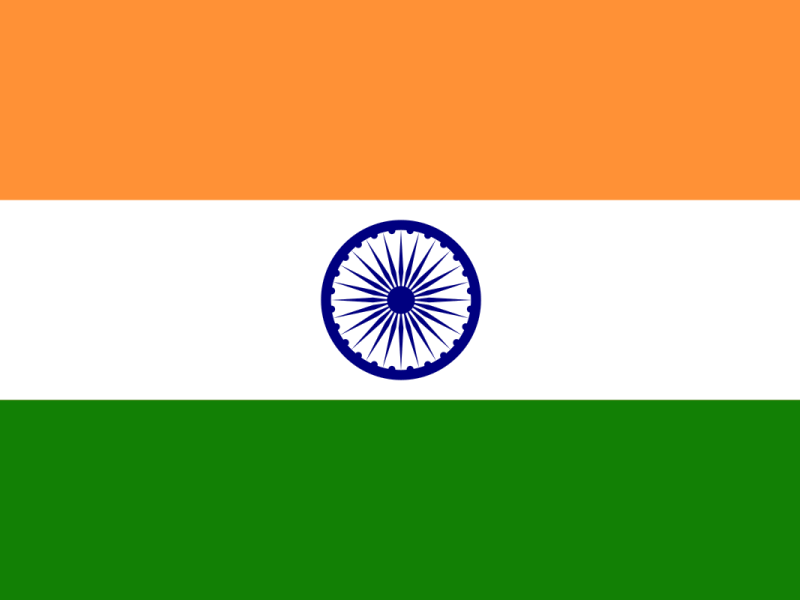
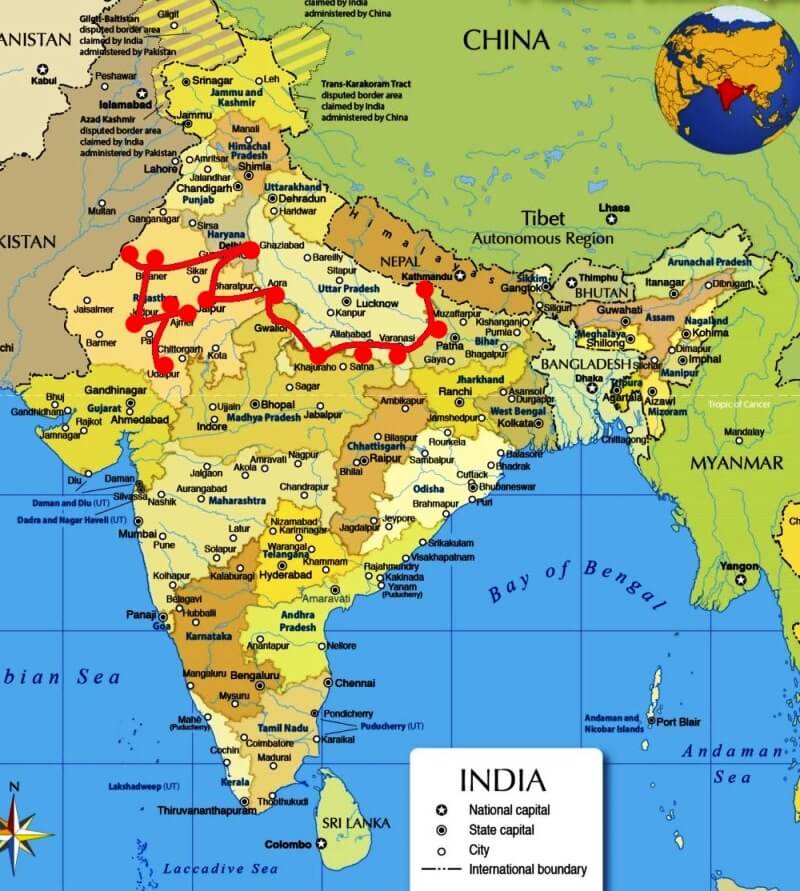
At the table:
Indian cuisine can be super spicy! You will gladly eat rice, naan, paratha (flatbread-like bread), chapati and lassi (yogurt drink); young palates will appreciate pakora (battered and fried vegetables), dosa (savory crepes) and idli (rice cakes). Among the desserts: kheer (rice pudding) and kulfi (milk ice cream)
Essential experiences:
Spend whole days on ghat of Varanasi, in silence, admiring the Ganges and its sadhus during the ablutions; Visit the Temple of Mice in Deshnok; Admire the sunrise in front of the Taj Mahal in Agra
A month to discover the regions of Northern India, from Varanasi to the splendid Rajastan, among ghats, sacred cows, venerated mice, divine elephants ... a new world!
A trip to Northern India allows you to admire the sinuous shapes of the Taj Mahal in Agra and those of the brightly colored turbans that surround the leader of the elephant drivers of Rajasthan; allows you to get intoxicated with the intense flavors and fragrant scents of local cuisine, whose recipes and spice blends date back to the times of the Maharajas; finally it helps to understand the profound spirituality and the millennial culture of its people, which characterize the sacred city of Varanasi or the Golden Temple of the Sikhs in Amritsar.
A trip to India can be challenging, shocking poverty, overcrowding and exasperating bureaucracy but if you manage to get through all of this your experience will prove to be unforgettable. Keep in mind that it will take weeks to visit, which is why we decided to divide our long journey into several fragments. Here we focus essentially on the northern part of India, passing over the Ganges and on the Punjab (having dedicated two separate reportages to them).
We entered on tiptoe, by land, into this new reality from Nepal and despite all the emotional impact it was devastating!
We traveled for months, far and wide, using the most disparate means of transport but always trying to favor the legendary trains ... Always in second class, travelers among the Indians, every train journey could give life to a book given the magnificent encounters, adventures and nocturnal vicissitudes, the awakening among hundreds of people, without privacy, where we eat together, sing and dance together and keep company during the many hours of travel, often whole days!
Our suggested itinerary (30 days) | |
First week: | Gorakhpur, Varanasi (visit to the ghats) |
second week: | Allahabad (boat ride to Sangam), Khajurao (visit to sacred temples), Agra (visit to Taj Mahal) |
third week: | Jaipur, Amer (visit to the Castle), Delhi (visit to Gurudwara Bangla Sahib Temple and Qutub Minar) |
fourth week: | Bikaner, Deshnok (visit to the Rat Temple), Jodhpur (visit to Mehrangarh Fort), Ajmer, Pushkar and Udaipur |
"... I think about how many different aspects of India I have already seen and how many still await me. The crowded and chaotic streets of Delhi, the lice-filled heads of children extending their hands for a few rupees, people and cows sleeping along the sidewalks and on the traffic dividers, the blinding splendor of the Taj Mahal, people who spit and spit on the trains at night, the rats coming out of restaurant kitchens, the dark and penetrating eyes of the wrinkled old men, the smell of piss and cow dung, the bare-chested, barefoot sadhus living along the ghats of Varanasi , the intriguing and mystical sculptures of the kamasutra in Khajuraho, the butterfly-colored saris that the smiling women wear, the old women squatting in their dark rooms while preparing food, groups of men chatting on the street or loading their rickshaws until their wheels, the smell of incense and flowers. "
- Paola Pedrini -
We are on the border between Nepal and India, after a long journey in an uncomfortable bus from Pokhara. We bargain for an off-road ride to the first major city: Gorakpur.
Finally the mystical India.
It is exciting to walk through the large portal that announces: "Welcome to India" with our backpacks on our shoulders.
I will never forget the entrance to the Gorakhpur railway station.
I've never seen anything like it. Hundreds of people camped on the ground everywhere, lying to sleep on their saris, millions of gnats of all kinds and sizes that pestered you, jumped at you, buzzed around your head, you could hear them everywhere: inside the T-shirt, in your pants ... then talk about the stench ... anyone pissed where they happened, like animals, without restraint or shame.
But we have other things to think about. Although we have traveled all day, the night is still waiting for us in a berth up to Varanasi, the legendary Benares.
Our first night train in India. We are a little worried.
Everything in Varanasi revolves around the sacred river: the Ganges. There are those who come here to die, those to pray, those accompanying them to bathe their sacred cow or those who simply decide to wash the laundry. The impact with Varanasi will certainly be very strong but here the goddess of the river offers the possibility of getting out of the eternal cycle of life and death.
Go down the grand staircase and find myself in front of the Ganges it gave me a very strong emotion. I couldn't believe I was really there, that very river seen in a thousand documentaries.
The water is very dirty but children dive into it to play, others wash their bodies and clothes.
Three girls joke peacefully one meter from a corpse that floated after cremation. Many families do not have enough money to have their entire bodies cremated and therefore even half-burnt is thrown into the river ...
But what really matters is to free the soul and give the spirit to the sacred river.
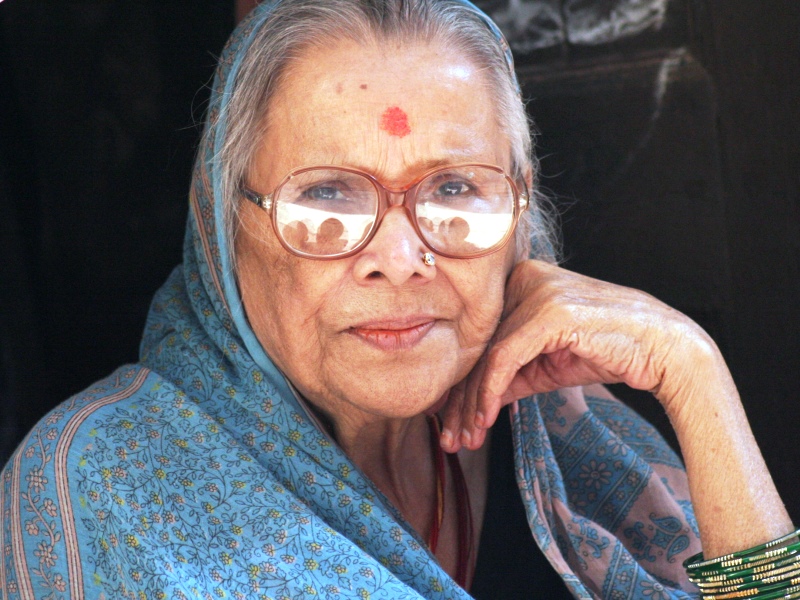
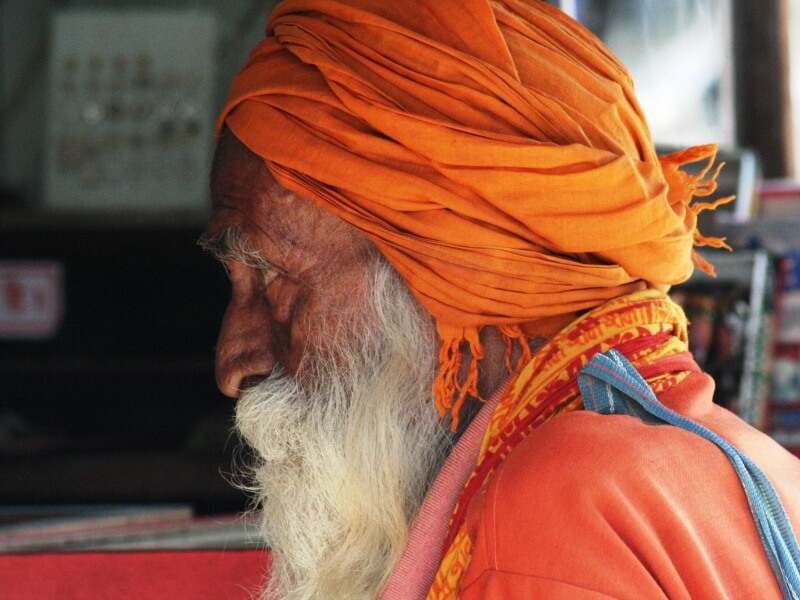
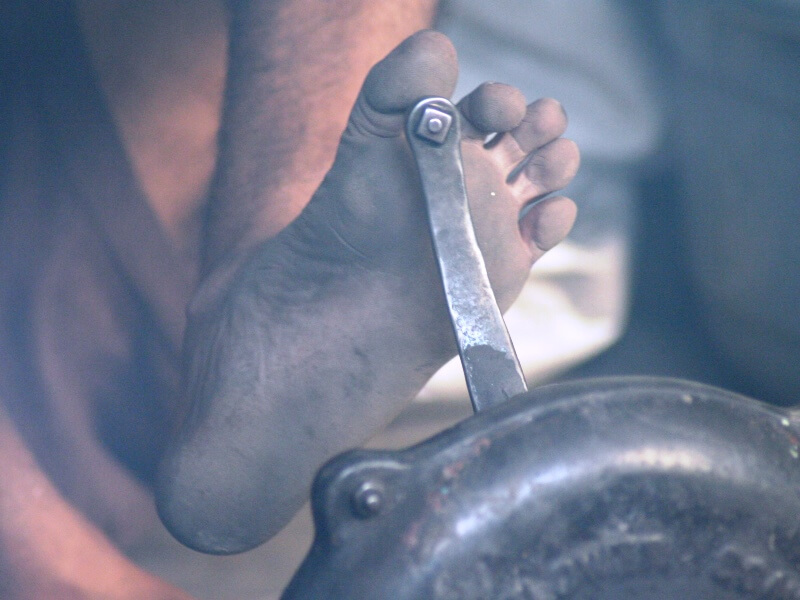
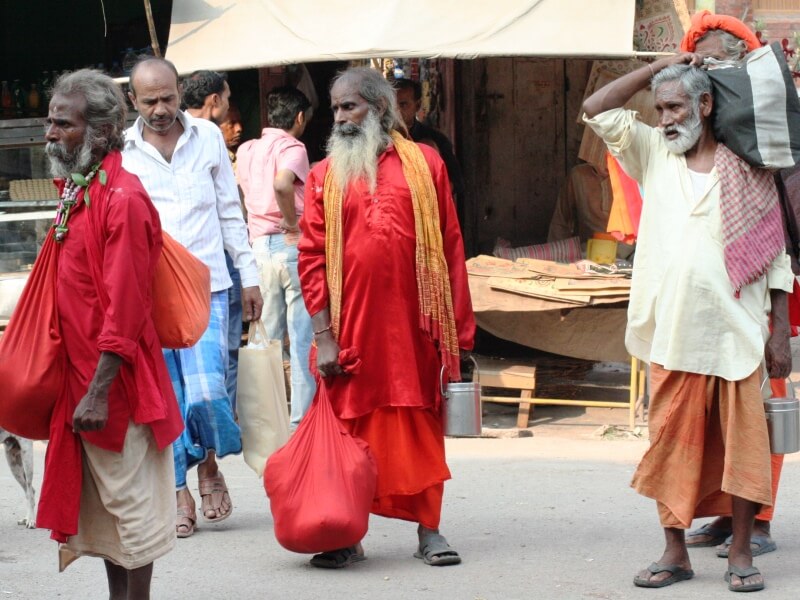
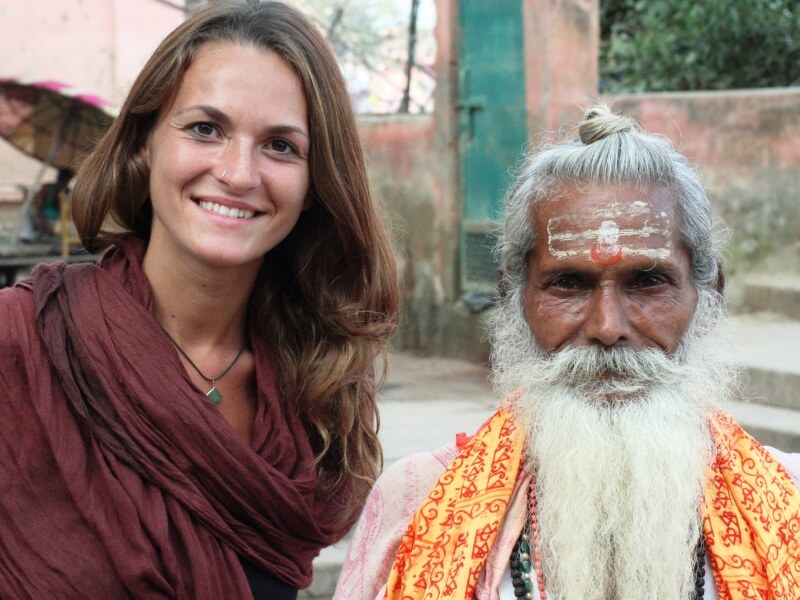
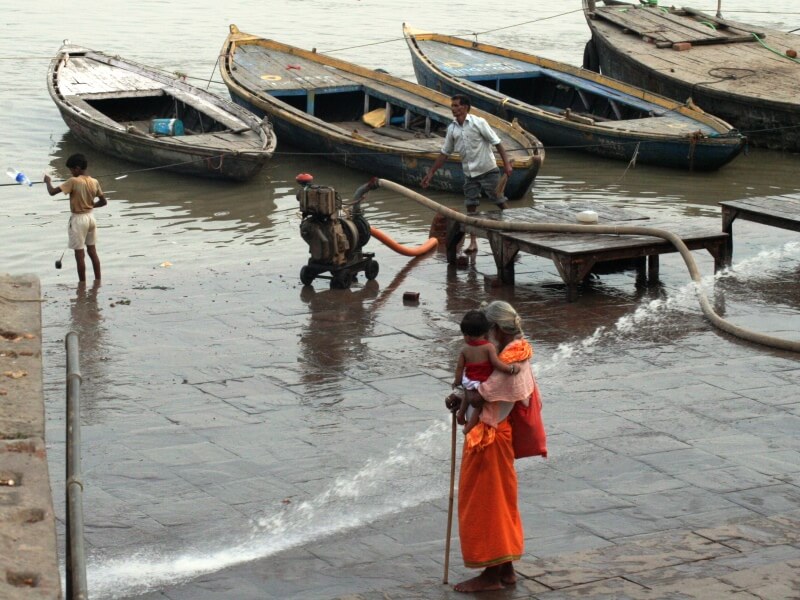
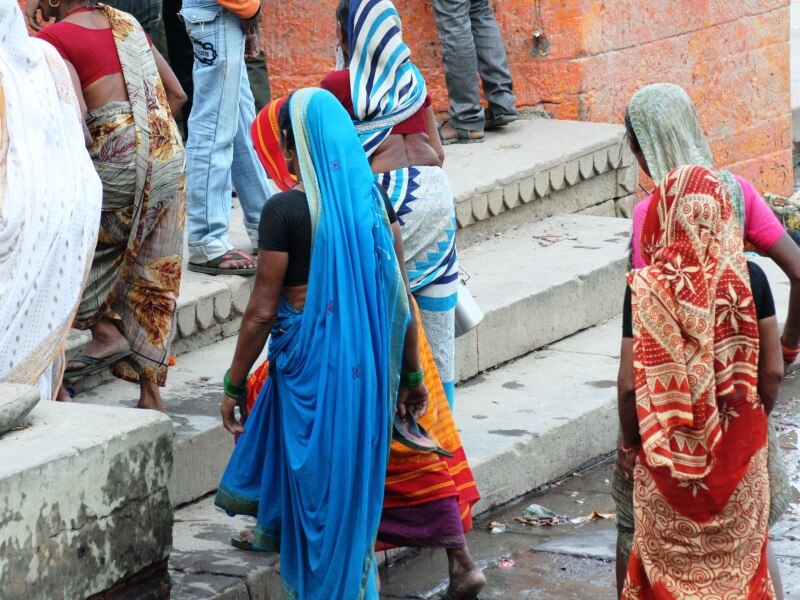
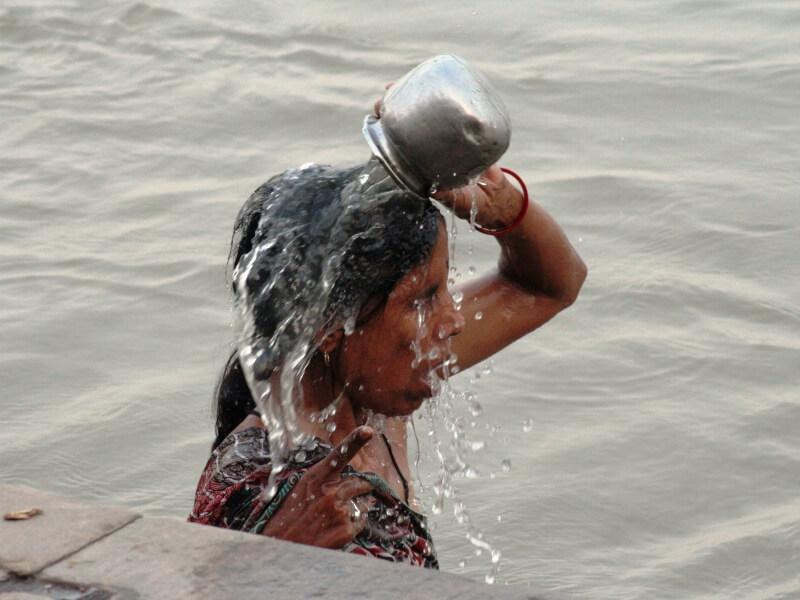
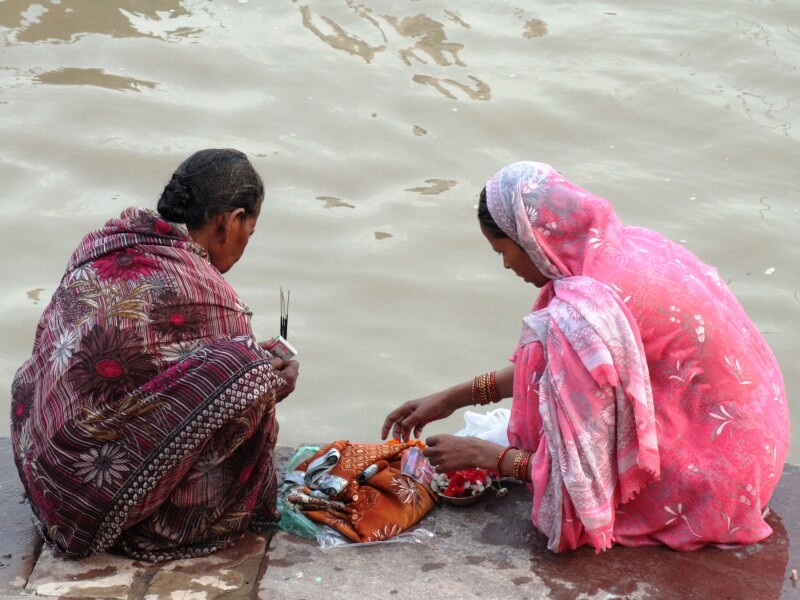
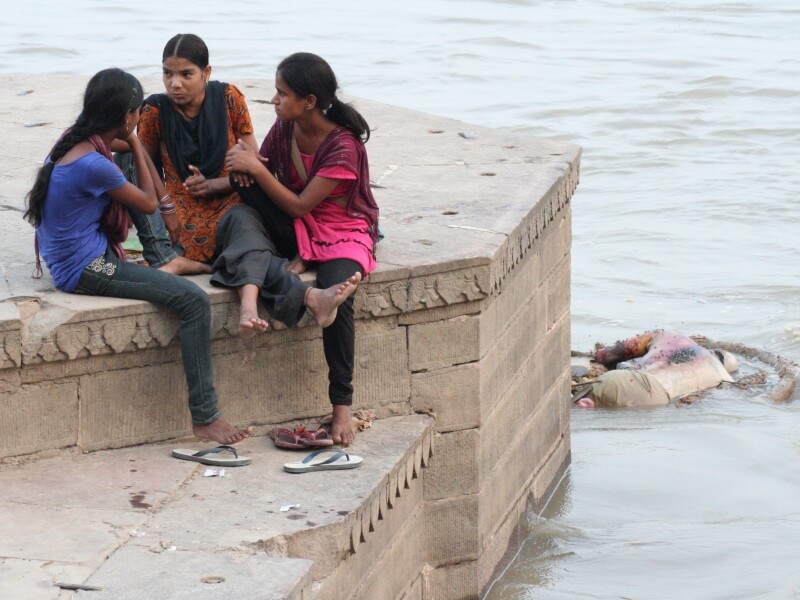
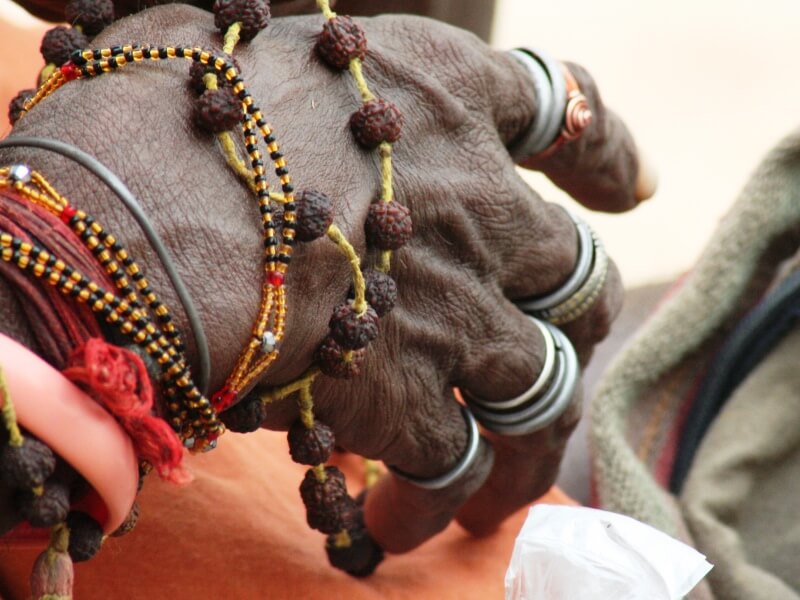
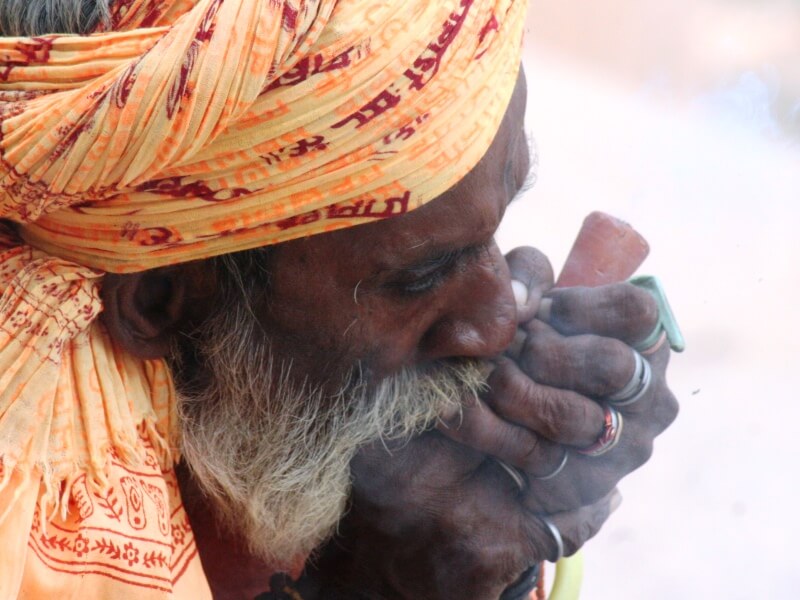
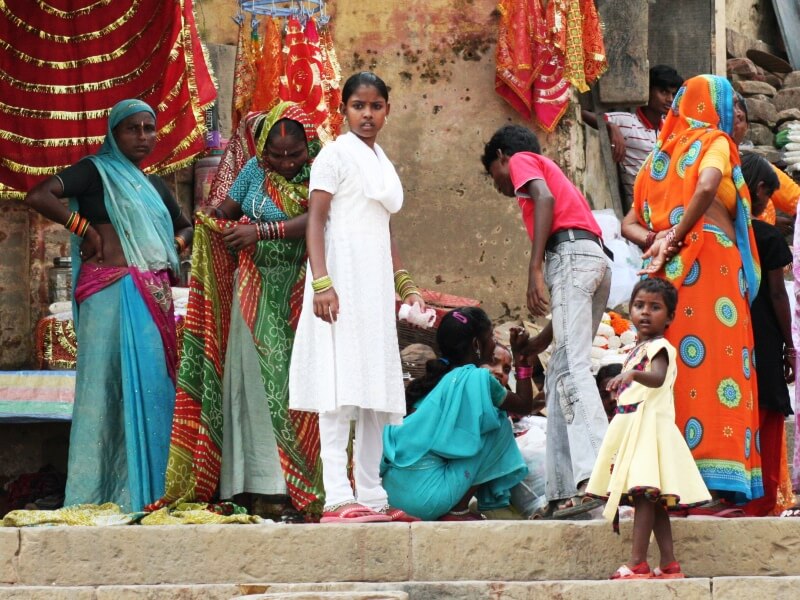
Cows in the street, monkeys that jump on your head, rats that pass on your feet, dogs that doze sprawled, cows of cows everywhere, garbage, beggars, cripples, lepers ... misery, poverty, sadness ...
India is a world apart, it is confusion, it is mysticism, it is chaos, you have to taste it in small sips if you want to get to know it thoroughly and then fall in love with it.
Today was only the first day but already so full that now I need to turn off my brain a little to assimilate everything that still shines in my eyes.
The alarm rings at 4.45. A few minutes later we are already on the road.
I can't believe that at 5am there are already so many people around and in full swing.
The sun is about to rise and we float silently on our boat, no one speaks, we observe the sacred rites of the Hindu faithful who bathe in the waters of the "Mother Ganga”.
Slowly we approach the main cremation ghat: the Assi Ghat ...
Any comment is superfluous but in the late morning we decide to return, and this time by land ...
At the end we will spend the whole morning sitting on the ghats observing the daily life of this people ...
We walk, in flip flops, among shit, mud and all forms of waste ...
From the top of an abandoned building we observe various cremation ceremonies. The arrival of the body wrapped in multicolored veils, the deposition of the body and finally the stake. So many bodies were arriving…. After all, if bathing in the sacred waters of the river represents the purification of all sins, dying there becomes the greatest aspiration for every Hindu.
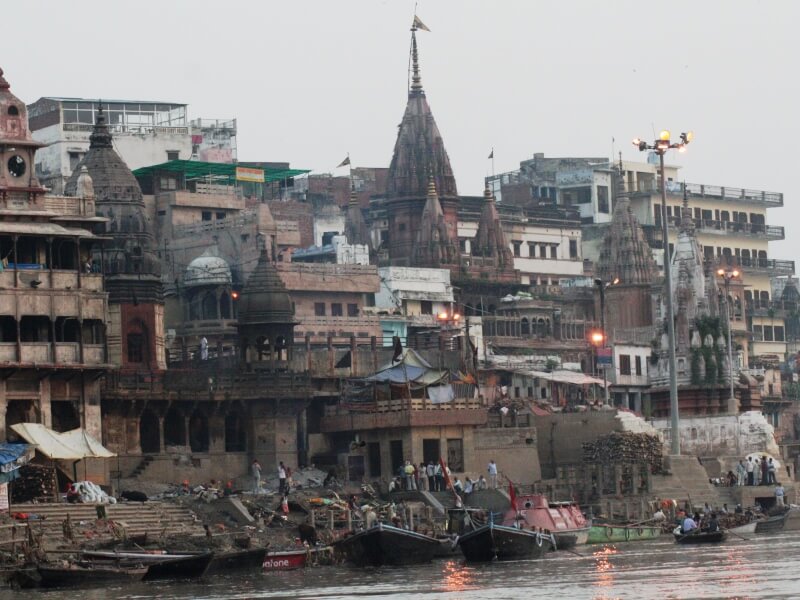
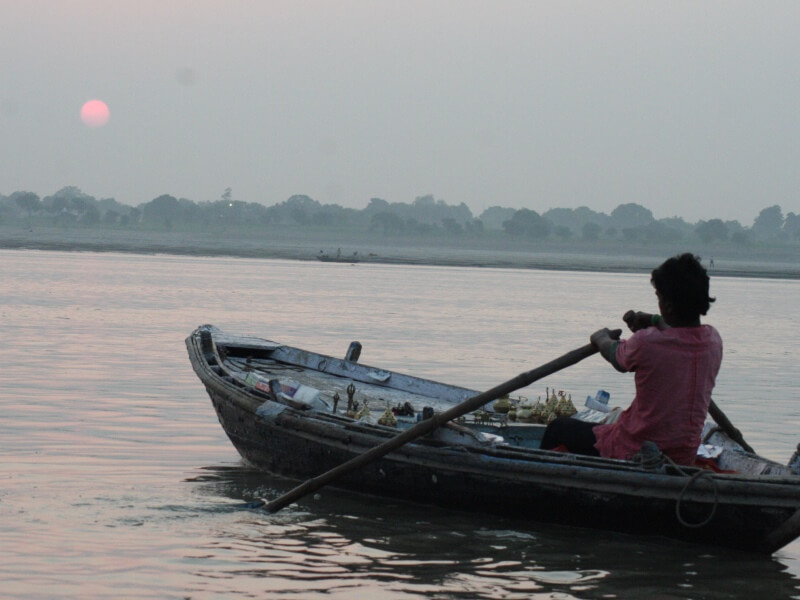
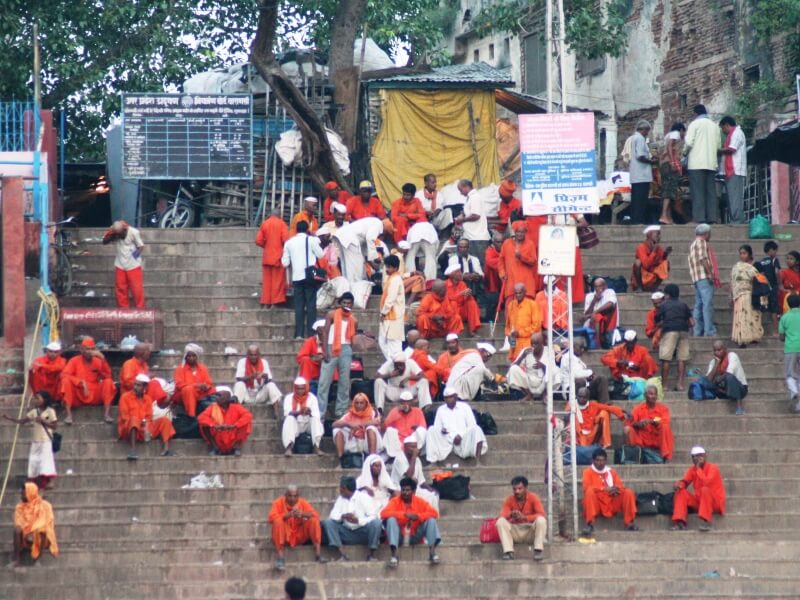
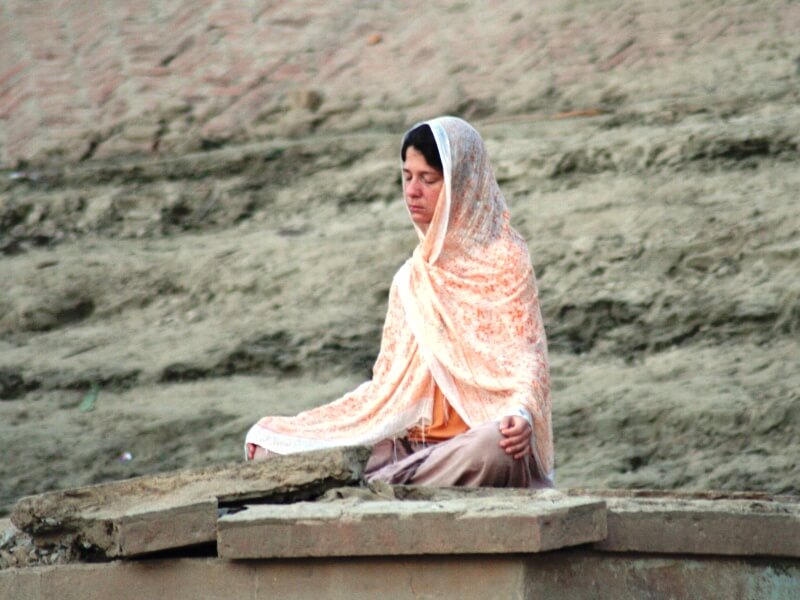
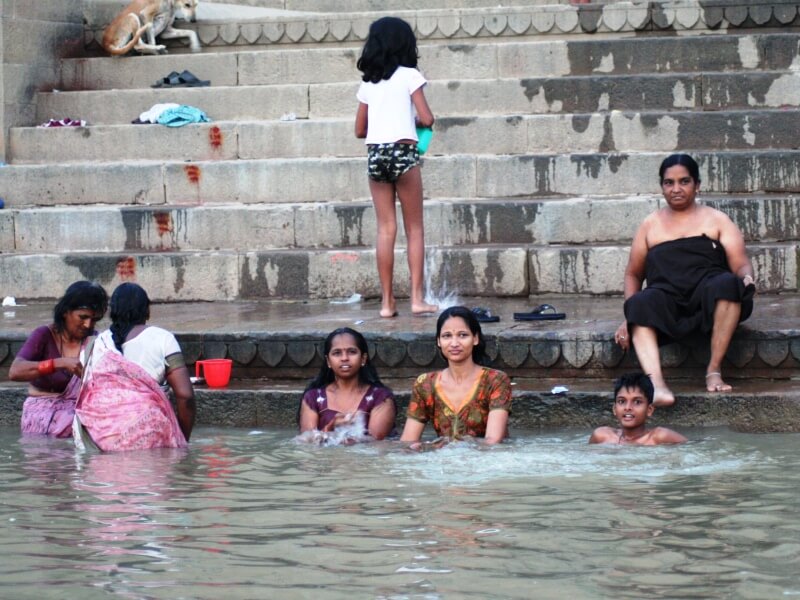
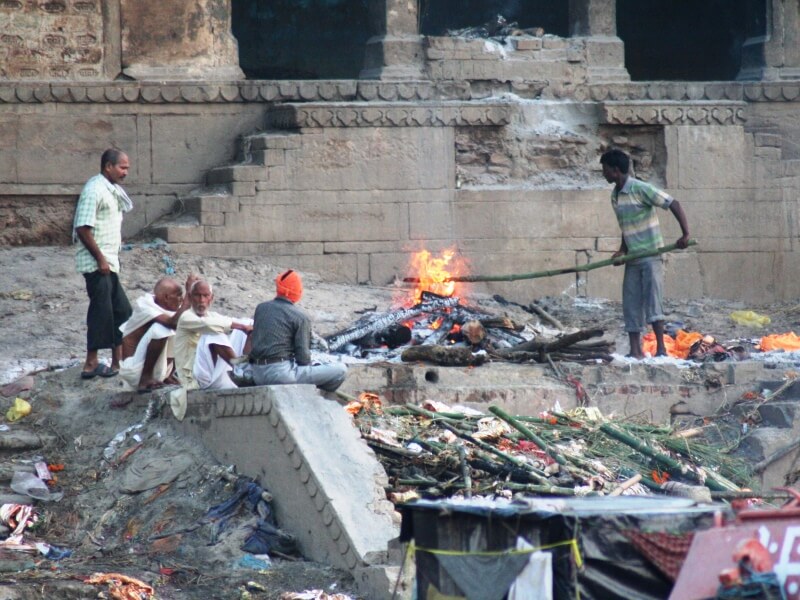
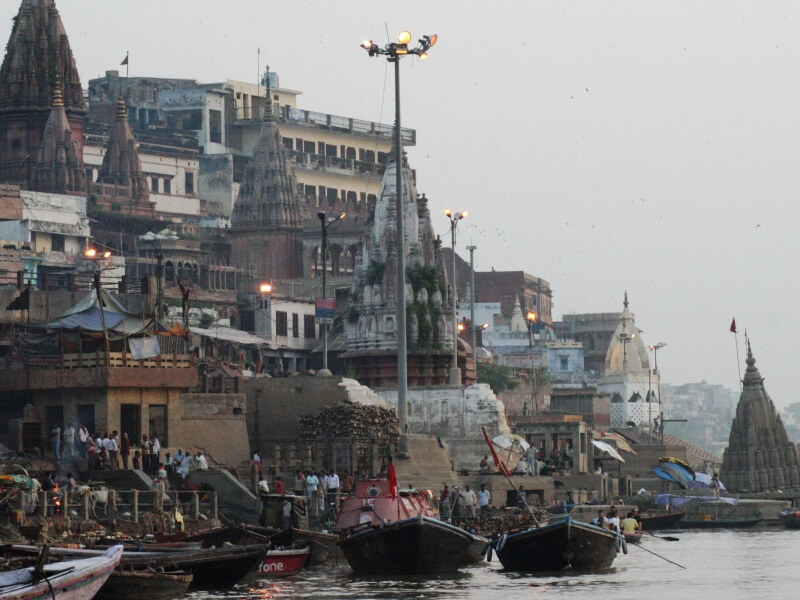
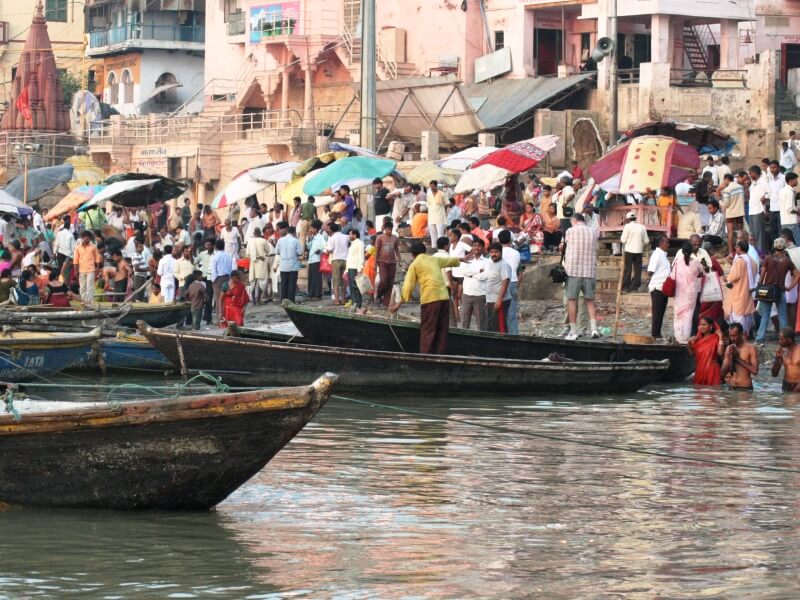
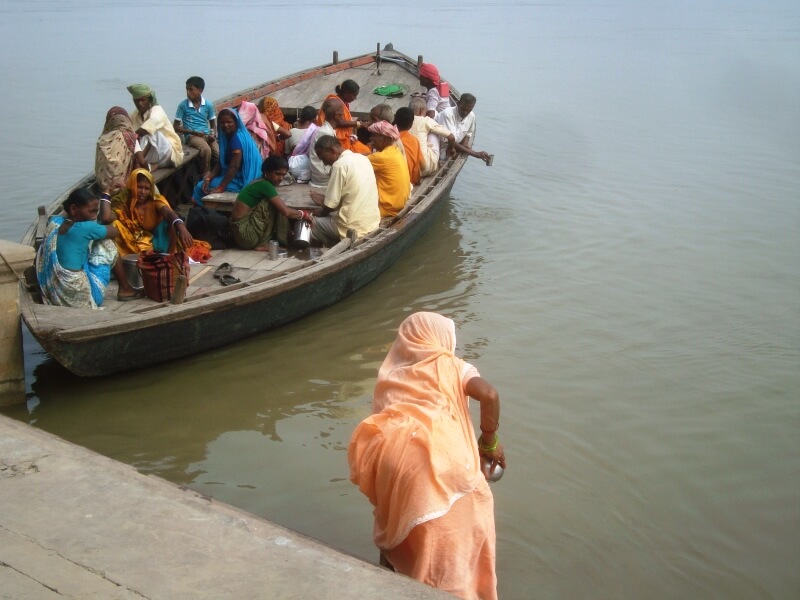
In three and a half hours by bus we reach Allahabad.
This city is famous for the famous Hindu festival of “Kumba Mela”, a ceremony held every six years and which attracts millions of Hindus from all over the world.
Welcomes us to his hometown: Nitin, a lawyer from the Indian High Court.
He hosts us, thanks to couchsurfing, in his beautiful villa complete with a caretaker, gardener as well as the many waitresses who so clash with the surrounding background.
"A man is rich in proportion to the things he can do without."
- Mahatma Gandhi -
By rickshaw we reach the Sangam, the point where the most sacred rivers of India (the Ganges and the Yuna) meet one of the mythological rivers of Hinduism: the Saraswati.
This is truly a place full of spirituality. Pilgrims formed processions, women danced, red flags waved while men played drums and sitar.
"Keep your thoughts positive Because your thoughts become words Keep your words positive Because your words become your behaviors Keep your behaviors positive Because your behaviors become your habits Keep your habits positive Because your habits become your values Keep your values positive Because your values become your destiny ".
- Mahatma Gandhi -
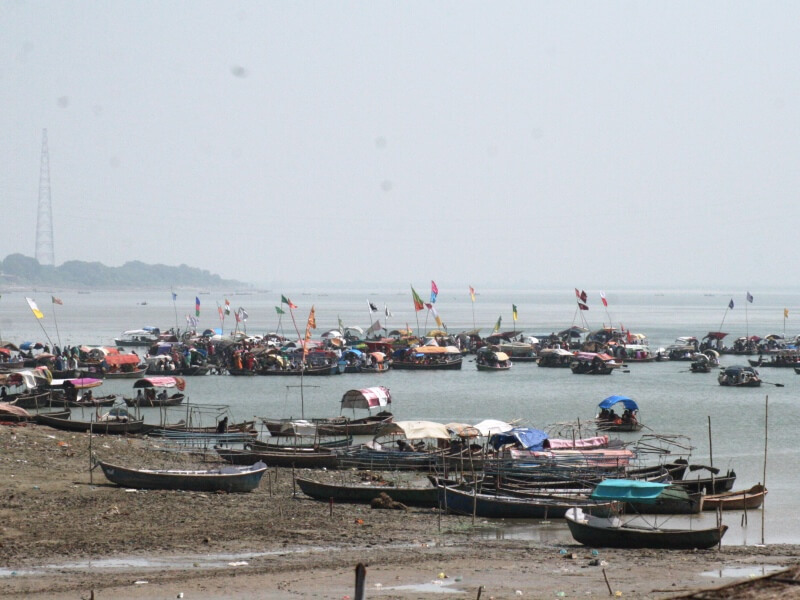
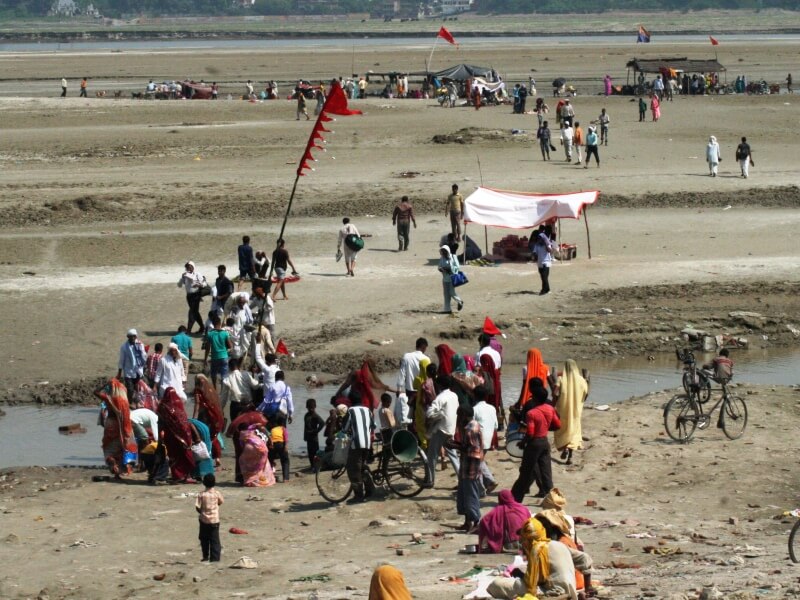
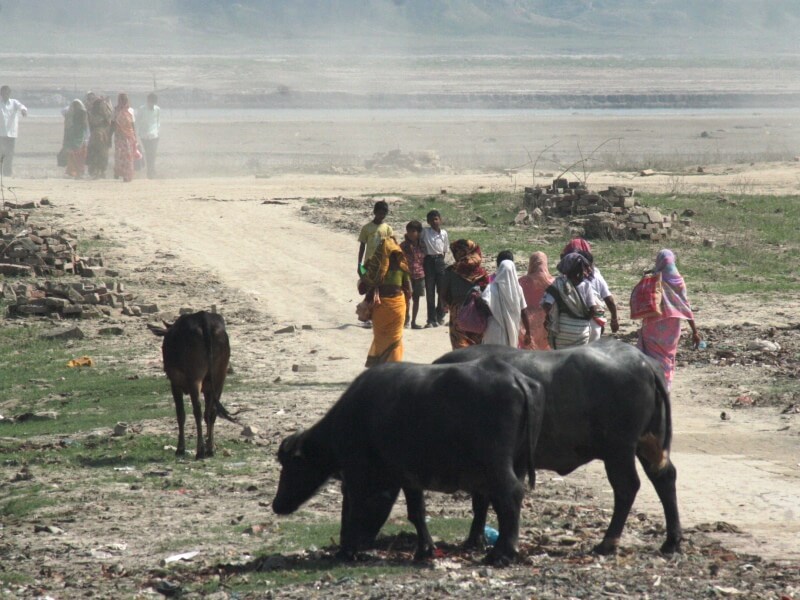
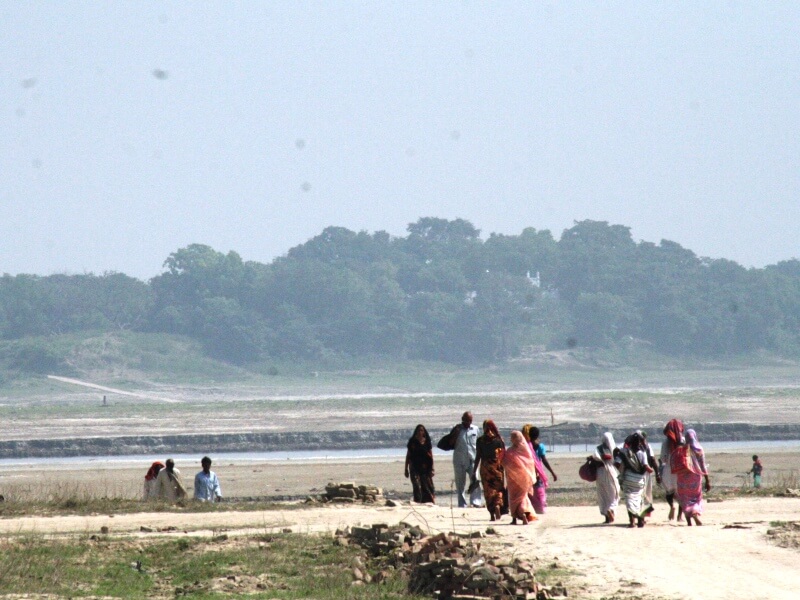
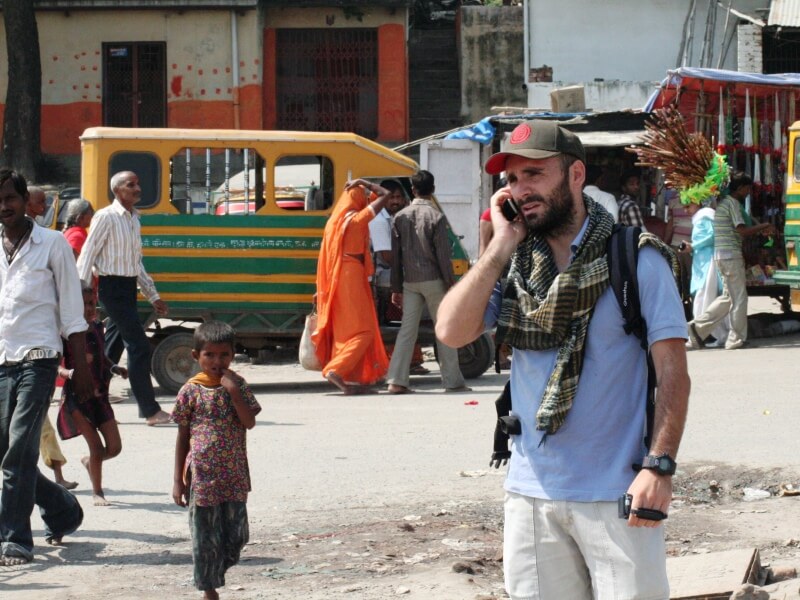
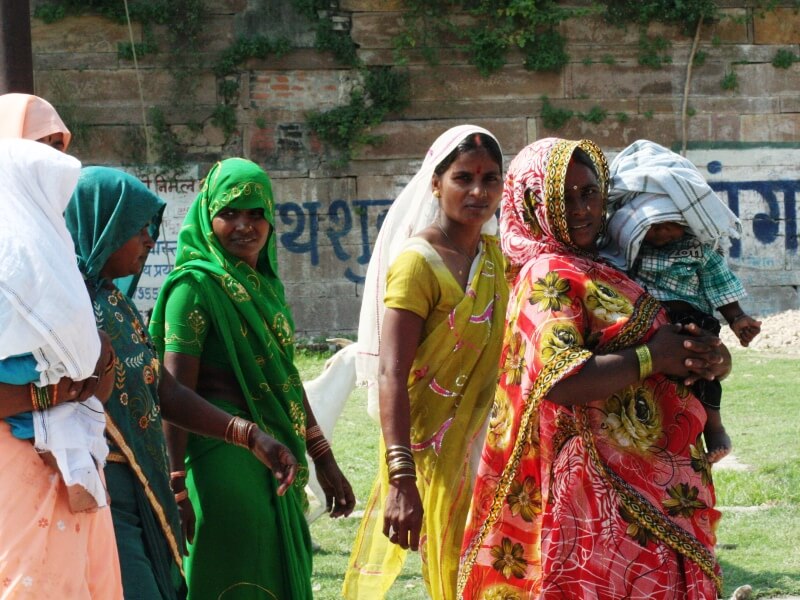
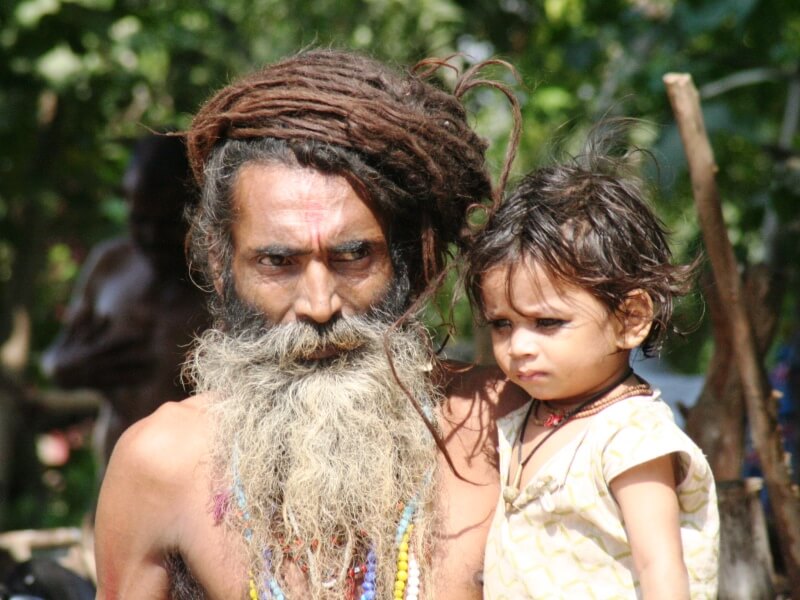
After a night on the train in which we slowly try to settle in, we arrive in Khajuraho. The imposing complex of Khajuraho today preserves only 22 temples of the original 85. However, just enough to make the small village of Madhya Pradesh one of the most visited destinations every year by tourists who land in the Subcontinent.
Erected between 950 and 1050, at the time of the Chandela dynasty and now a UNESCO World Heritage Site, these icons of excellent artistic mastery and unpredictable sensual, elegant and provocative spirituality, appear as slender masses of spiers culminating in a series of friezes and sculptures with a highly erotic flavor and more ...
Agra, a small town in Uttar Pradesh, very close to Delhi and a must for anyone who comes to India because it is home to one of the most beautiful monuments in the world!
My eyes are filled, struck, enchanted by the perfect beauty of one of the wonders of the modern world: the Taj Mahal.
How many times have we seen it in photos, films, documentaries ... now it is there, in front of us, like a lion that, after a night of hunting, rests and relaxes proudly in the sun ...
As you approach through the monumental gardens you gradually discover the incredible inlays of the mausoleum made from thousands of semi-precious stones that form splendid ornamental compositions, a masterpiece!
The Taj Mahal is nothing more than a majestic 17th century tomb but I want to see it as Stefy defined it: "a gift of love"; a tribute to his beloved by a king in love who weeps for his love for him just expired.
Rabindranath Tagore described it as "a tear on the cheek of eternity"; Rudyard Kipling as "the incarnation of purity" while his client, the emperor Shah Jahan said that he made "tears shed in the eyes of the sun and the moon".
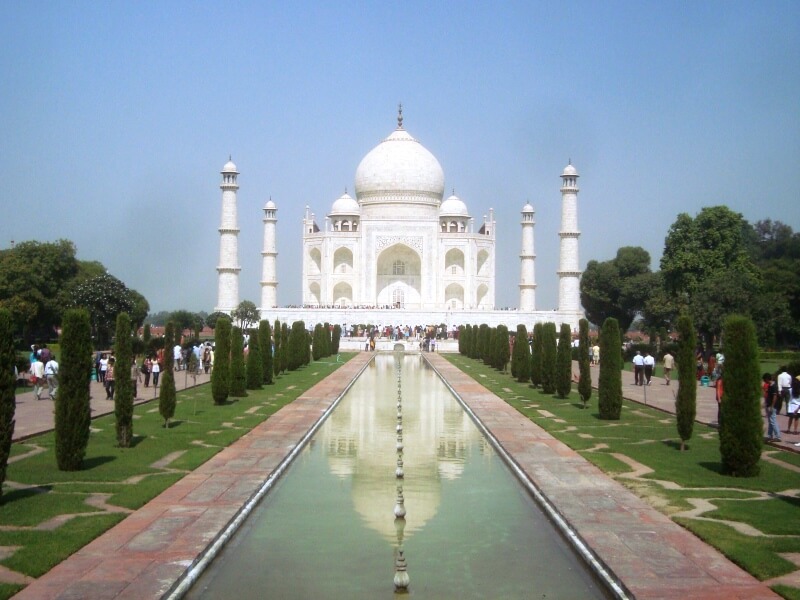
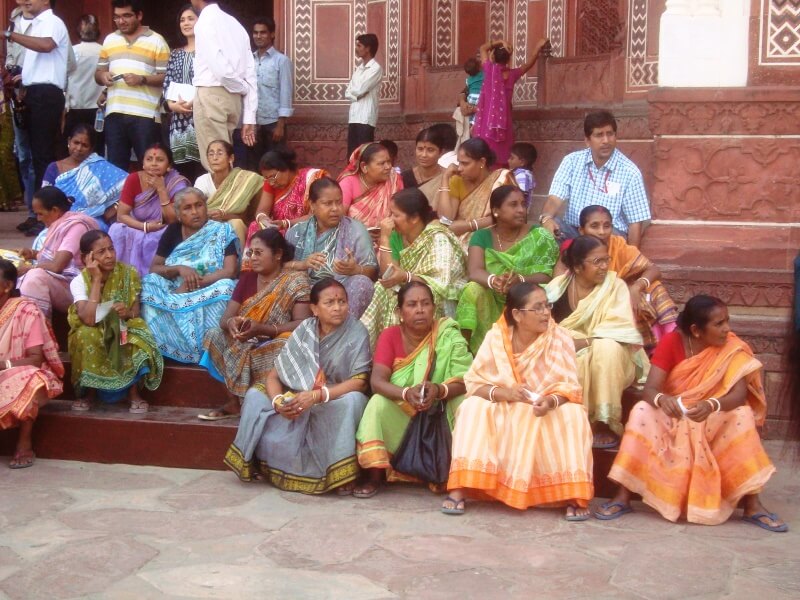
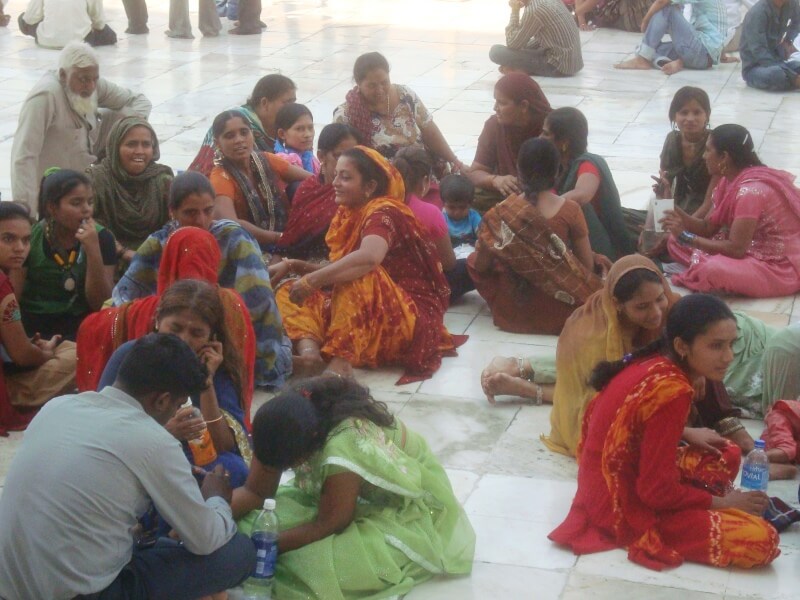
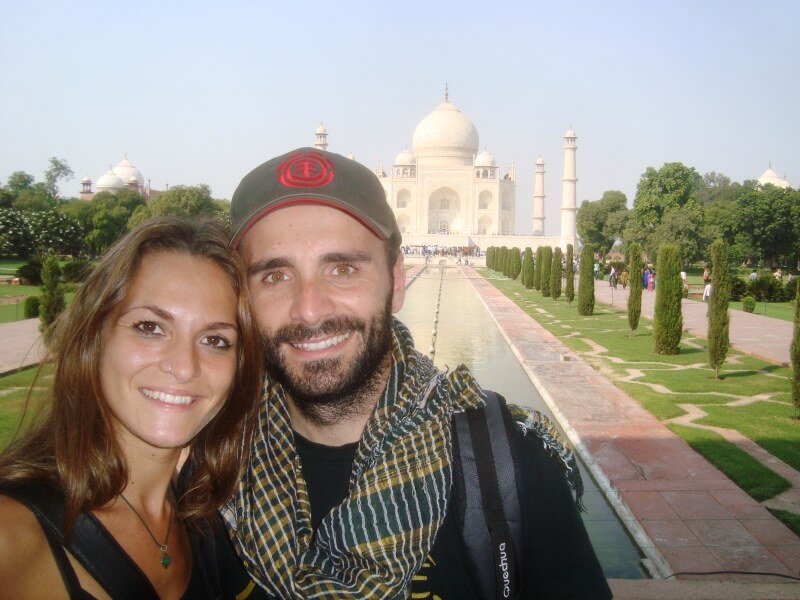
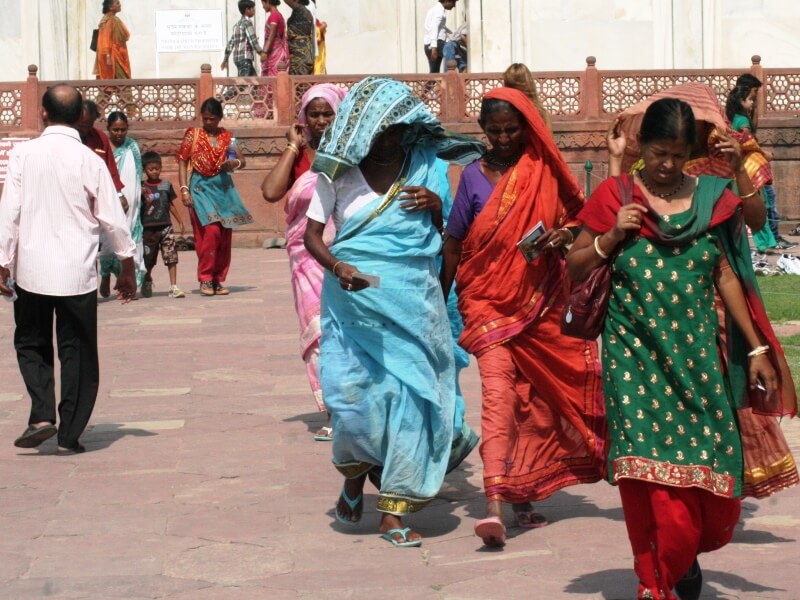
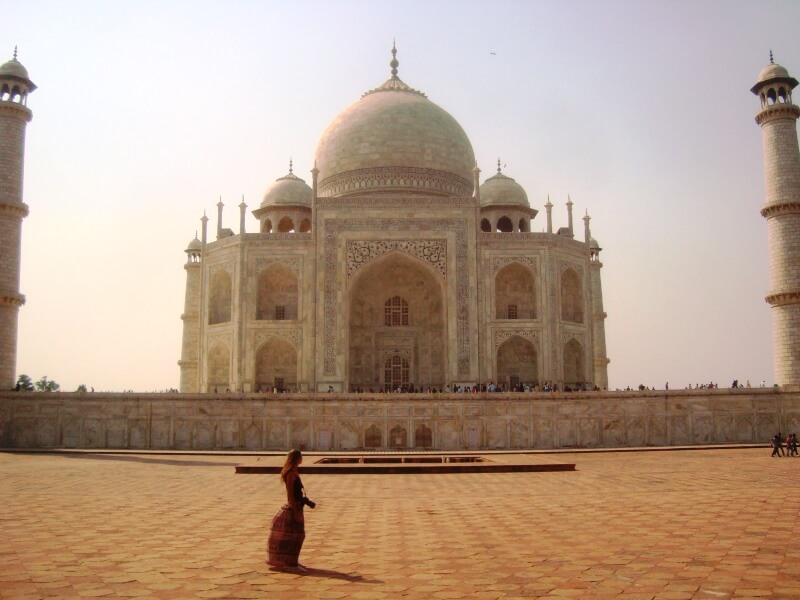
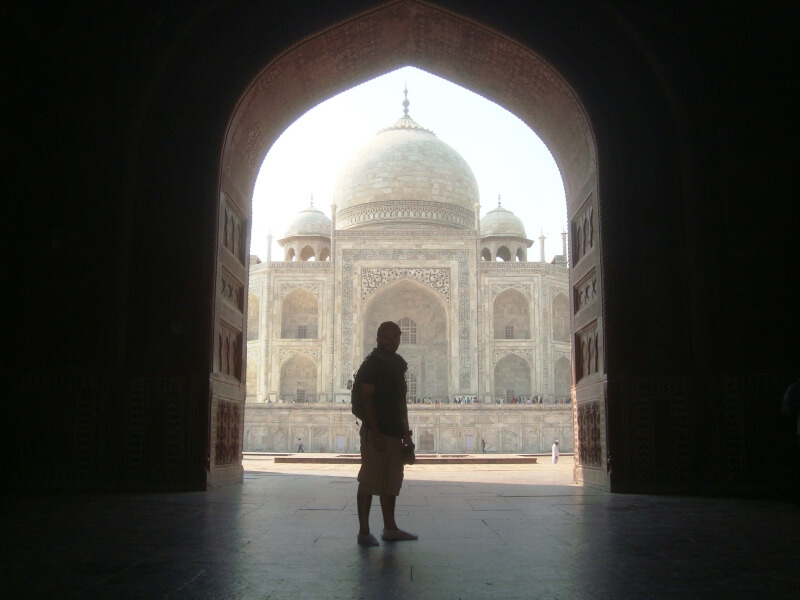
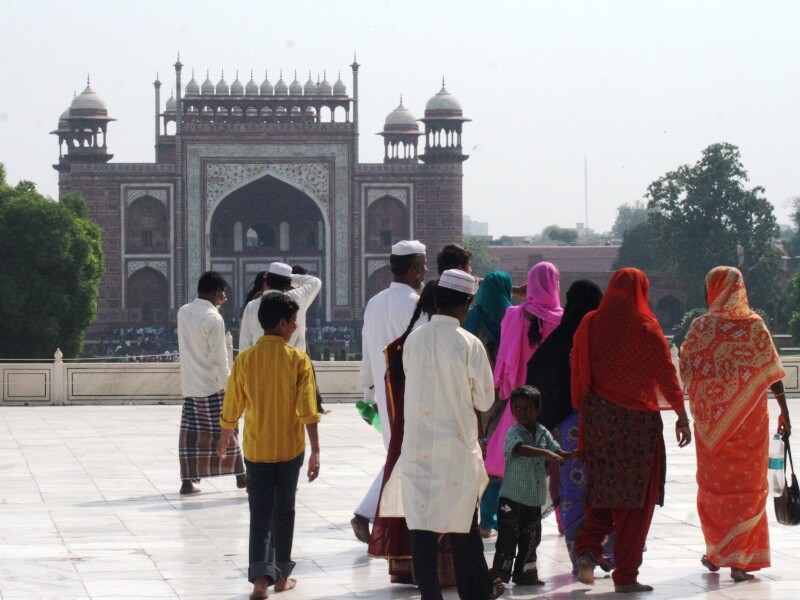
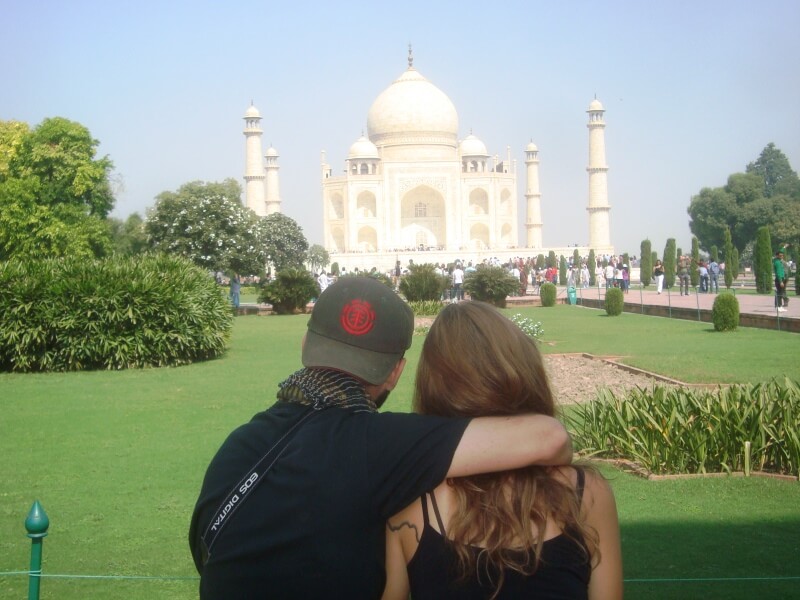
When you can wake up without an alarm clock, have breakfast on the romantic terrace of your little hotel which, combined, is the best viewpoint in the city, take a stroll in total relaxation among the stalls of the local bazaar and then end up eating a thali among the locals: then you are really living the journey!
"We have to become the change we want to see."
- Mahatma Gandhi -
Called the pink city, Jaipur, the capital of Rajasthan, is one of the most picturesque places in India. It is a city that combines modern and ancient, which owes its name to the imaginative invention of Maharaja Ram Singh, who in 1876 had the buildings of Jaipur painted pink, fearing that the reflection of the sun on the white of the facades could annoy the visit. of the Prince of Wales.
It takes us about four hours to reach it by train.
We are guests, thanks to couchsurfing, of Pushpendra and his family made up of: father, mother, brothers, sisters and many people who pass by, take a chai, have a chat, maybe watch some Indian soap operas and leave. We share a room with a girl from Los Angeles who is here for a few months on business, she makes jewelry!
Here we found peace and tranquility.
We are surrounded by magnificent temples, the most beautiful of which is the “Jhagat Siromani”, right in front of “our” house.
The most important monument to visit is located a few kilometers outside the city center and is the Amber Palace, one of the most beautiful royal palaces in all of Rajasthan. This palace perched on a hill was the seat of the ancient capital of the state and expresses the beauty and perfection of Rajput architecture to the maximum. It is accessed from a monumental staircase (which can be traveled on foot or on the back of an elephant, I would avoid the latter option); inside you can visit the royal apartments of the maharaja and the magnificent panoramic terraces.
"You don't need to travel in time to be a historian".
- Isaac Asimov -
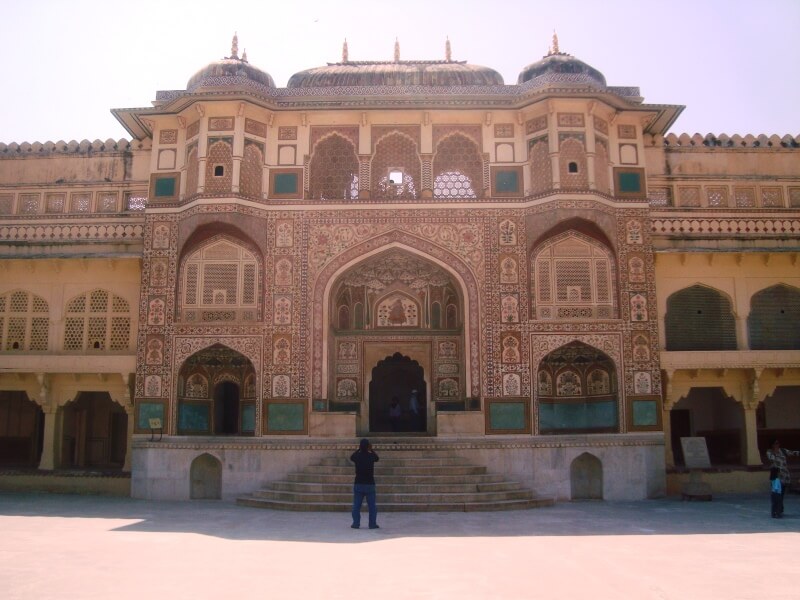
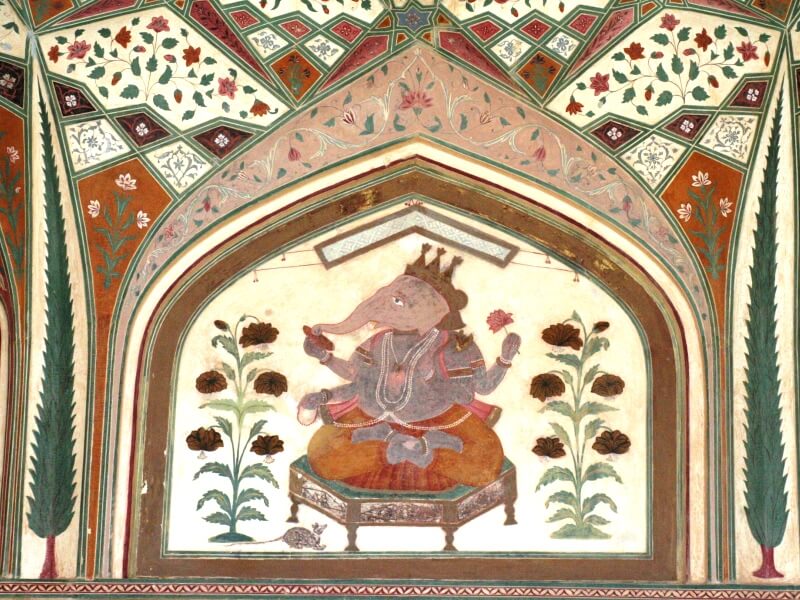
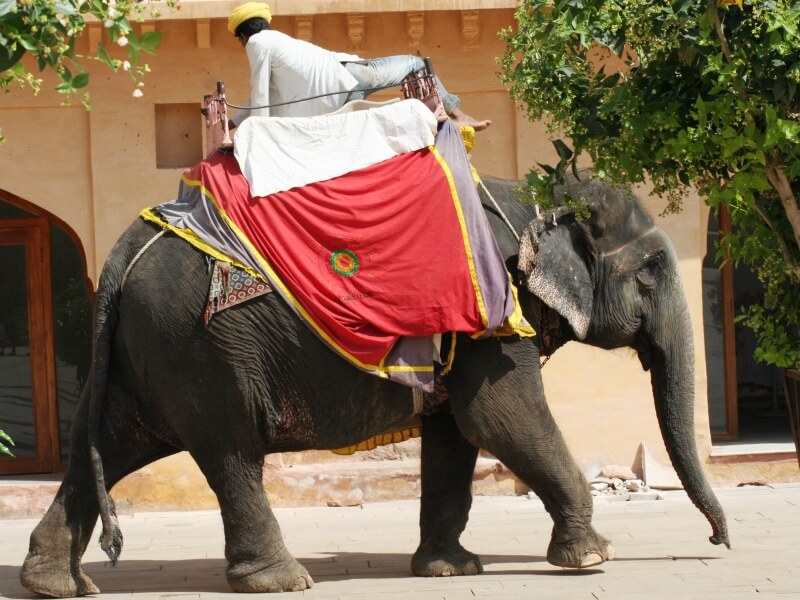
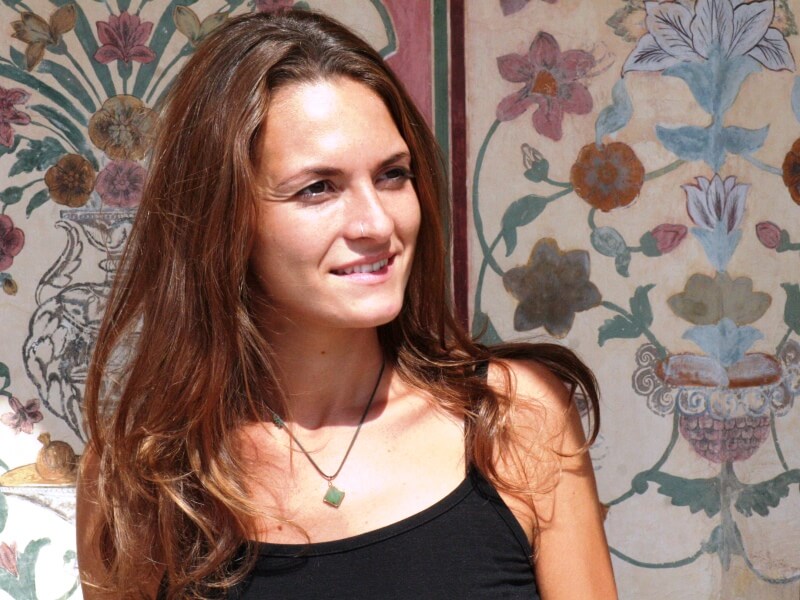
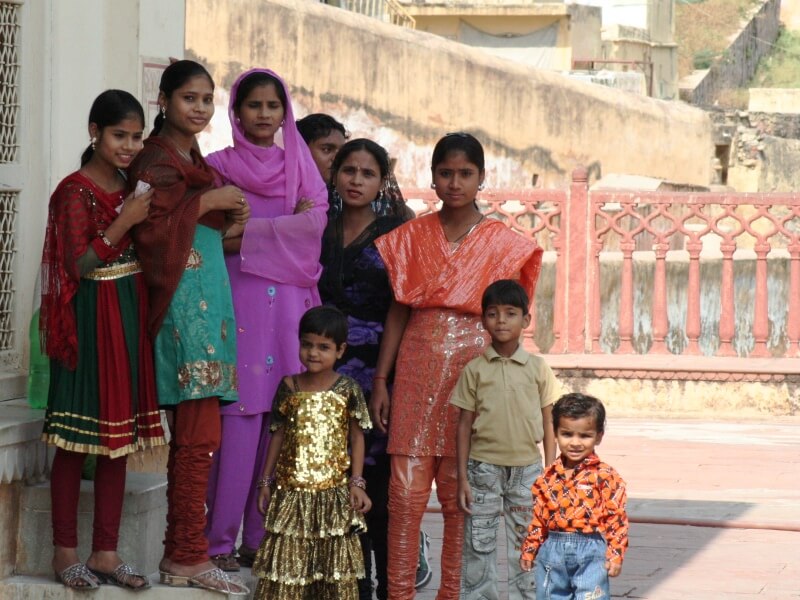
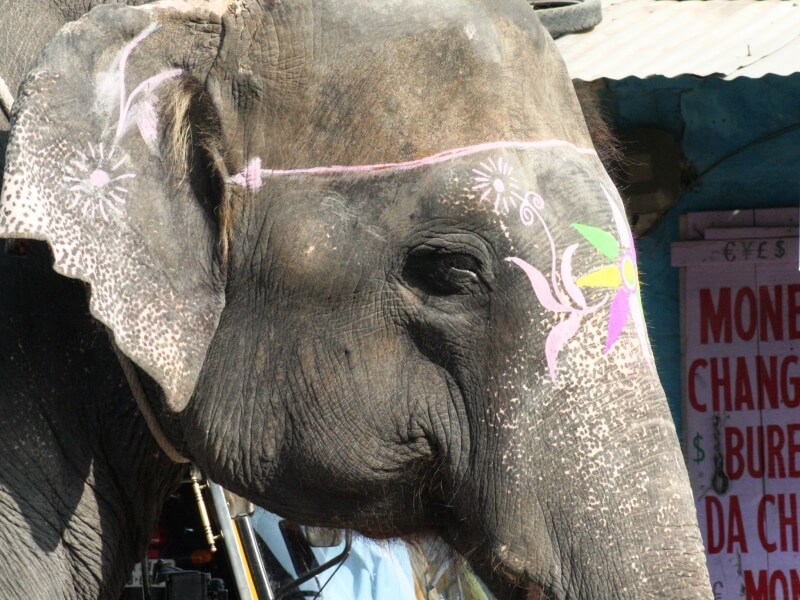
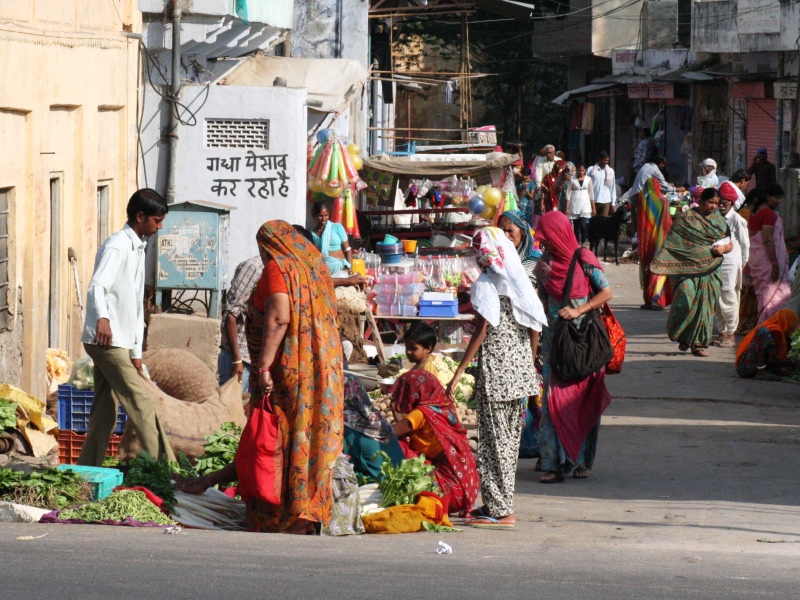
Today we dedicate ourselves to the old city of Jaipur, especially the part enclosed within the old walls. There is the Hawa Mahal, the famous 5-storey beehive palace built by the maharaja to allow court women to observe the daily life of the city without being seen and the imposing City Palace which contains several palaces, courtyards and gardens. , a taste of ancient India before leaving for the country's capital!
"Travel with heart and soul, bring an empty bag, and don't come back until it's full"
- Anonymous -
It is 3.30 in the morning when the alarm on our cell phone rings.
It is pitch dark outside.
By tuk tuk we reach the Jaipur railway station.
Jaipur by night shows us another aspect of it, the one away from the splendor of the pink buildings, we see its people resting wrapped, like mummies, in white sheets on the street, on the sidewalks, on rickshaws, in tuk tuk, in taxis.
The train leaves, I love Indian trains, a parallel world where you get sucked in quickly and it's nice to be guided by the flow of events!
The train begins to slow down, we are entering the suburbs of Delhi!
I look out of my bunk and in front of my eyes the images of everyday life in the slums flow: children playing in the garbage, men and women walking resigned, dry dogs resting ...
We finally arrive in Old Delhi and from our taxi we see a preview of the urban beauties, we are immediately struck by the clear contrast between rich and poor.
The capitals particularly fascinate me, perhaps because it is as if I have always known them!
Delhi is the capital of India, one of the main destinations in the country and the first point of entry, thanks to the presence of the busy New Delhi international airport.
The city is divided between the old part (Old Delhi) and the modern one (New Delhi), both visited every year by millions of tourists from all over the world.
A must see is the Chandni Chowk area, where there is the famous Old Delhi market, to stroll through the neighborhoods of the old part of the city, including shops, street vendors and local street food shops.
Particularly interesting is a visit to the Red Fort, declared a UNESCO World Heritage Site, an imperial residence dating back to 1600, the Victorian tower of Qutb Minar, which symbolizes the defeat of Hindu domination, the Tomb of Humayun made of red sandstone and the Jama Masjid mosque, the largest in Asia.
Also worth discovering in Delhi is the Gurudwara Bhangla Sahib Temple, where the cult of the Sikh faith is practiced, dating back to 1784 and the India Gate, the typically French-inspired triumphal arch.
We visited it at two in the morning and it was all very impressive.
The white marble walls are reflected in the waters of the lake that surrounds it.
The Sikh faithful with long beards and large colored turbans are very sociable and jovial.
They become curious when they see us and ask to be photographed.
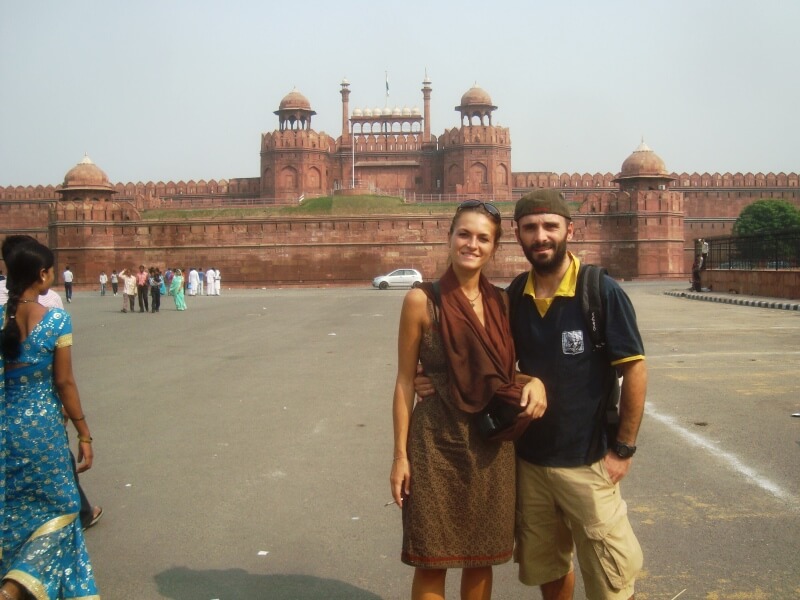
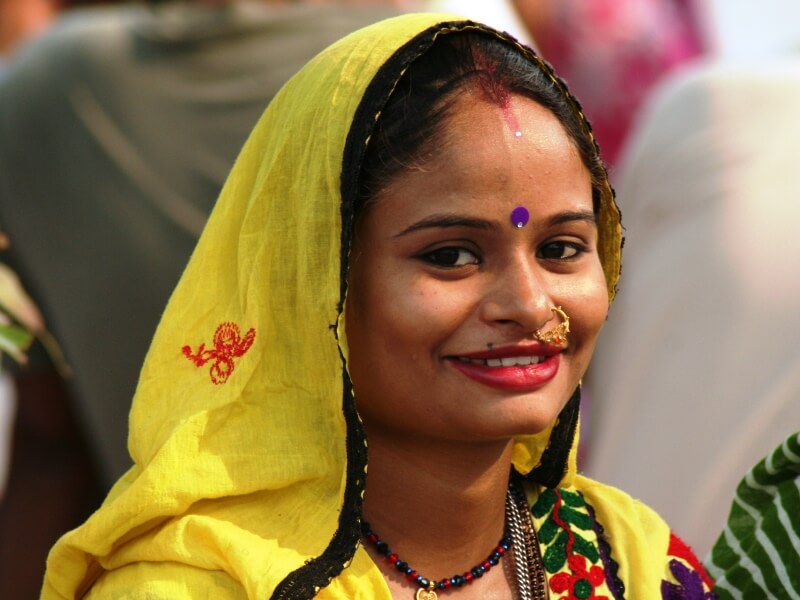
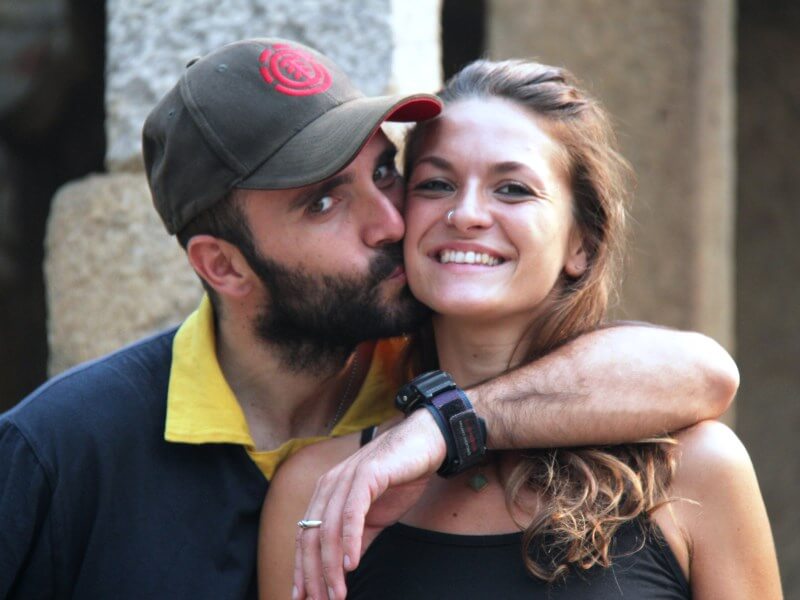
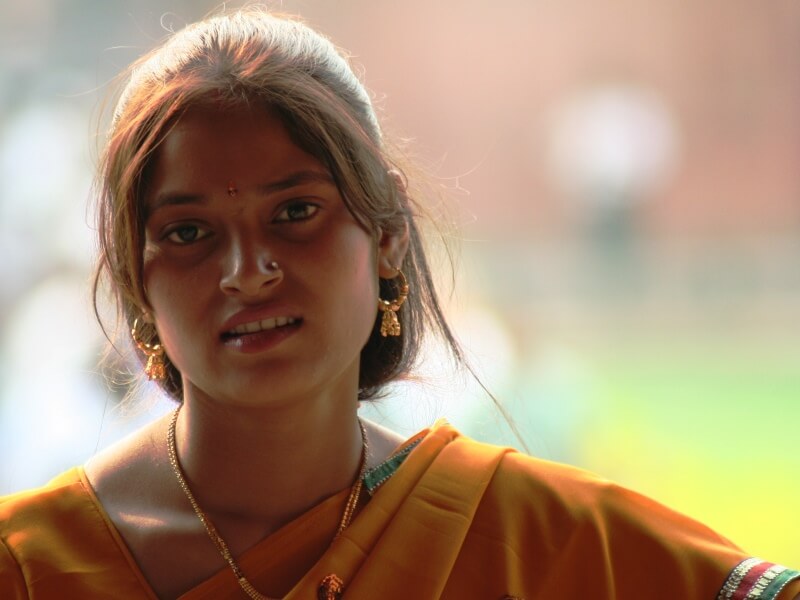
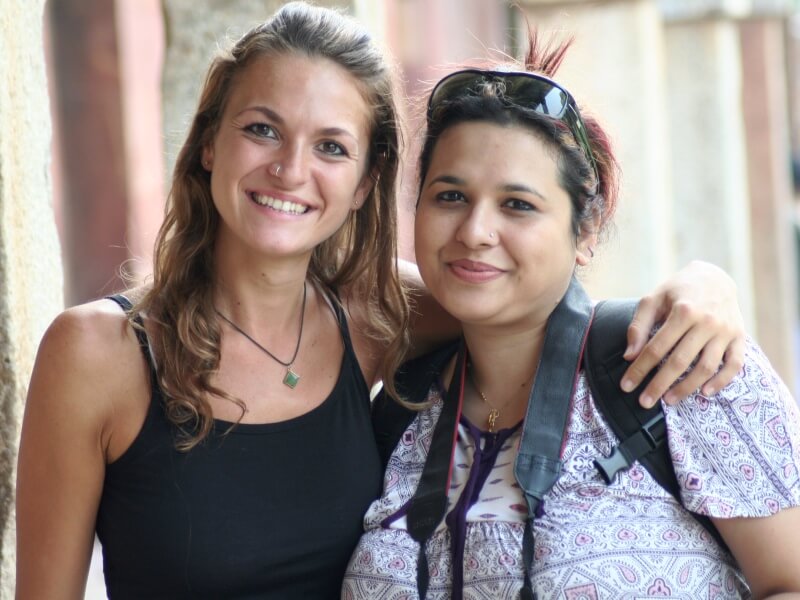
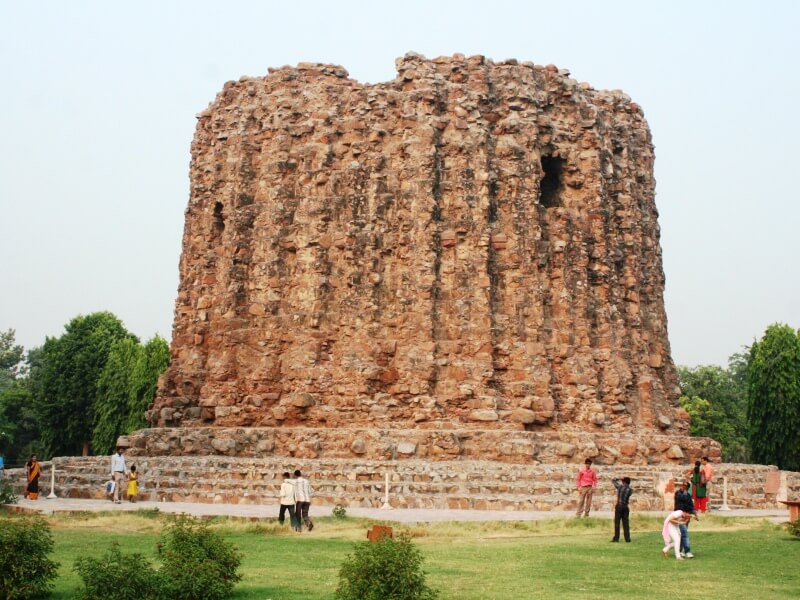
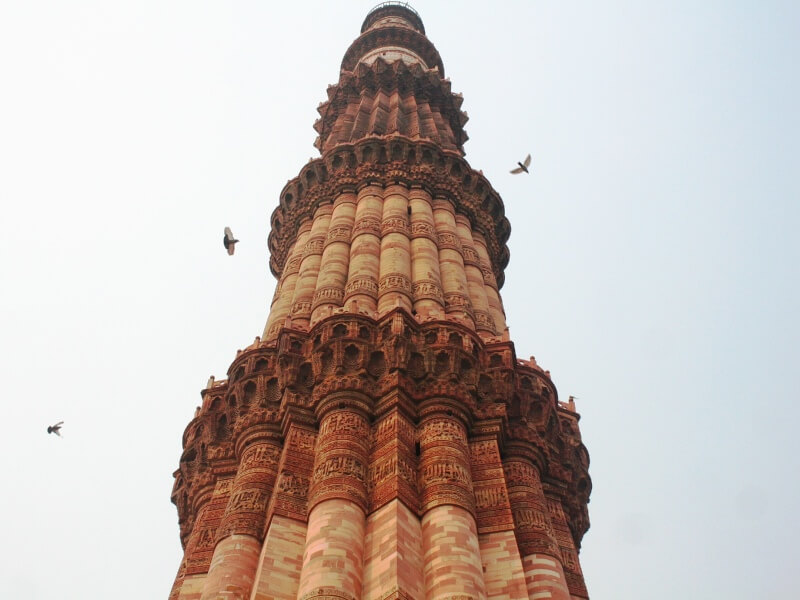
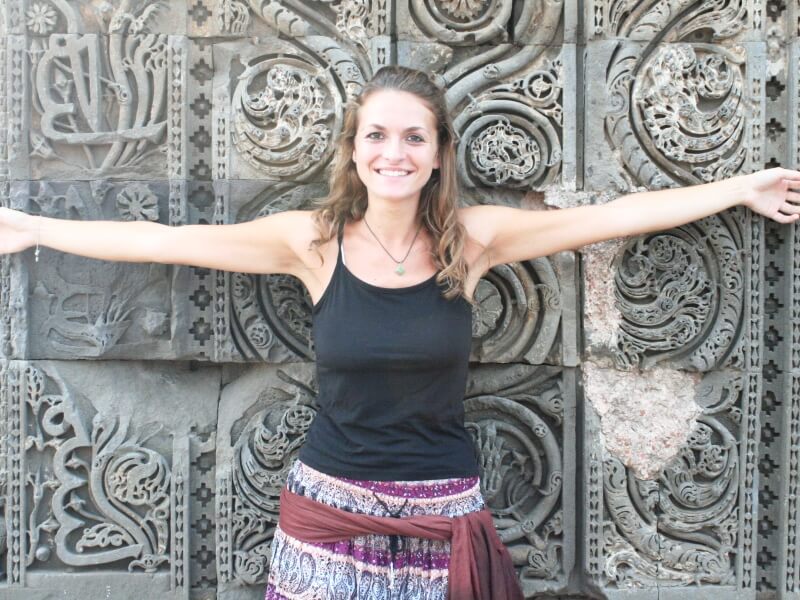
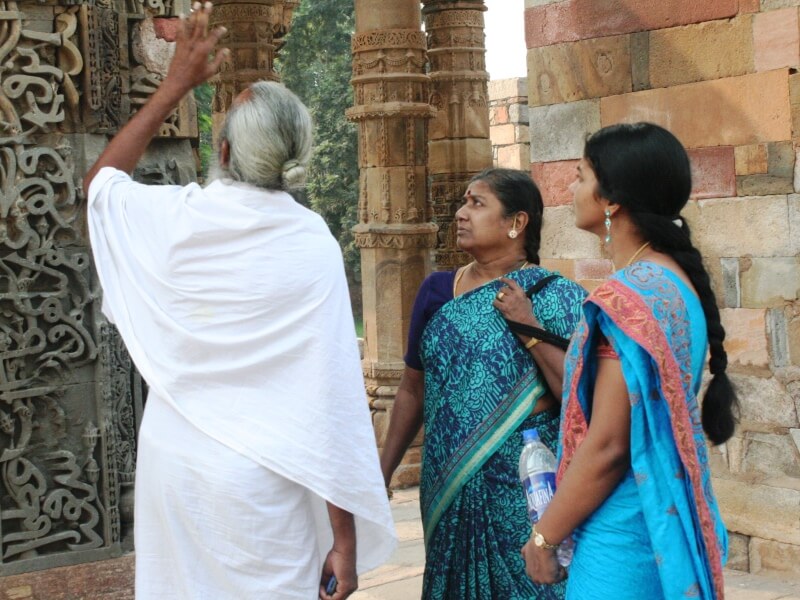
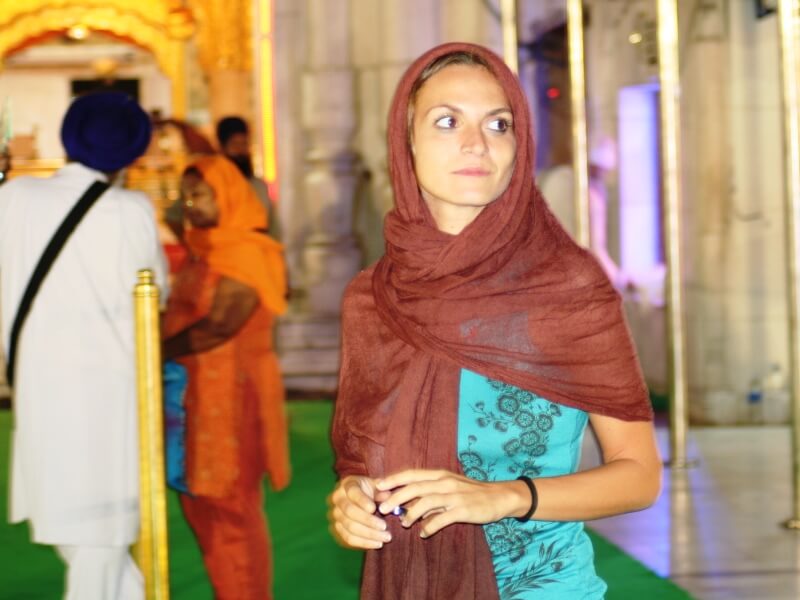
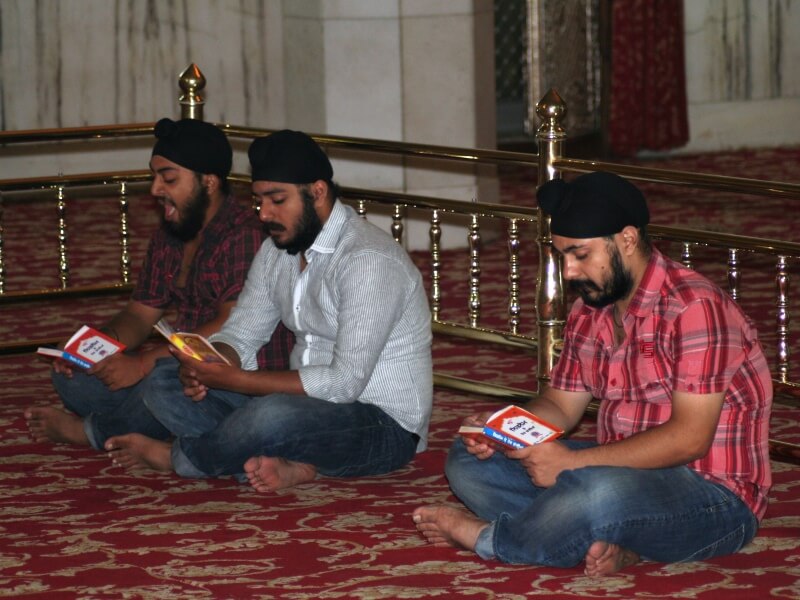
I immediately felt like part of my family. I've never felt so close to someone in such a short time. There are people you meet over the course of your life and you wonder if there was a previous connection with them. This strengthens my belief in reincarnation. Somewhere, we somehow had a connection and I'm so glad to have met you again in this life. I love you.
Monaliza Ramani
We decide to stop in the small town of Bikaner to visit the infamous "temple of mice" of Deshnok.
And here we are, by tuk tuk, towards this new adventure not too far from the border with Pakistan.
Stefy is very tense. Ha ha ha
We enter, two mice cross the small courtyard, take a walk and here is one of the most classic images of this place: two large plates full of milk and dozens of mice drinking ...
The "kaba" (sacred rodents) are revered by many pilgrims, in fact, according to a Hindu legend: the divinity Karni Mata asked the god of death Yama to bring back to life the son of a storyteller afflicted by this mourning. Upon Yama's refusal, Karni Mata had all deceased storytellers reincarnated in the form of rats, thus depriving Yama of human souls.
I still can't believe it: I walked through the "door of their house".
I was so struck by the idea that many people traveled many kilometers, hours and hours crammed into disgusting buses to bring offerings, food and milk to a horde of topastri ...
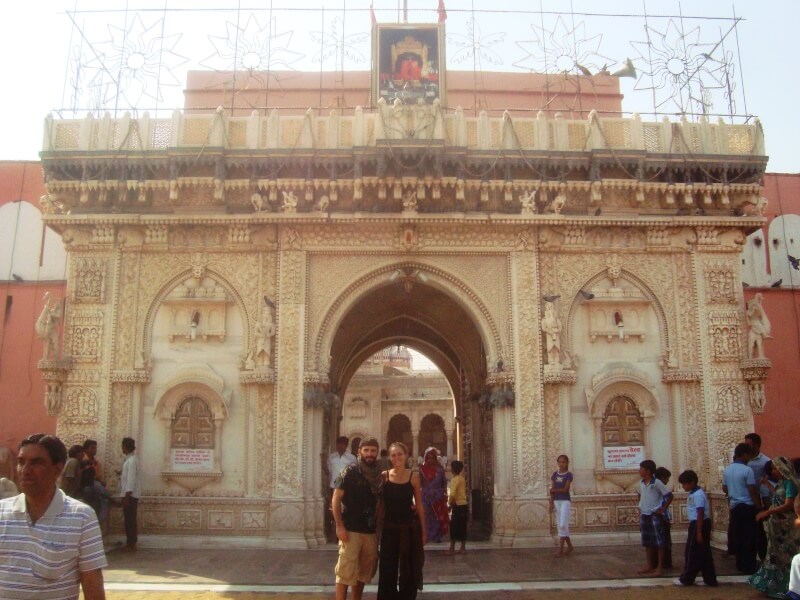
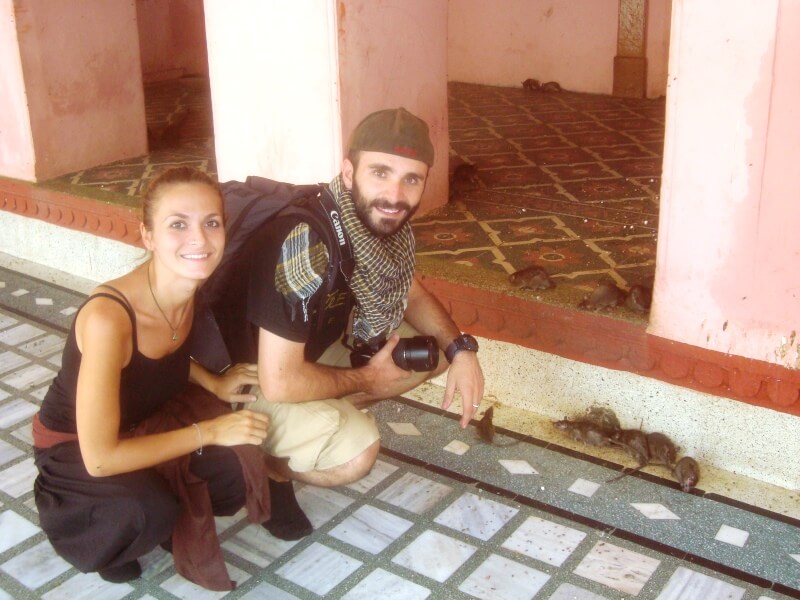
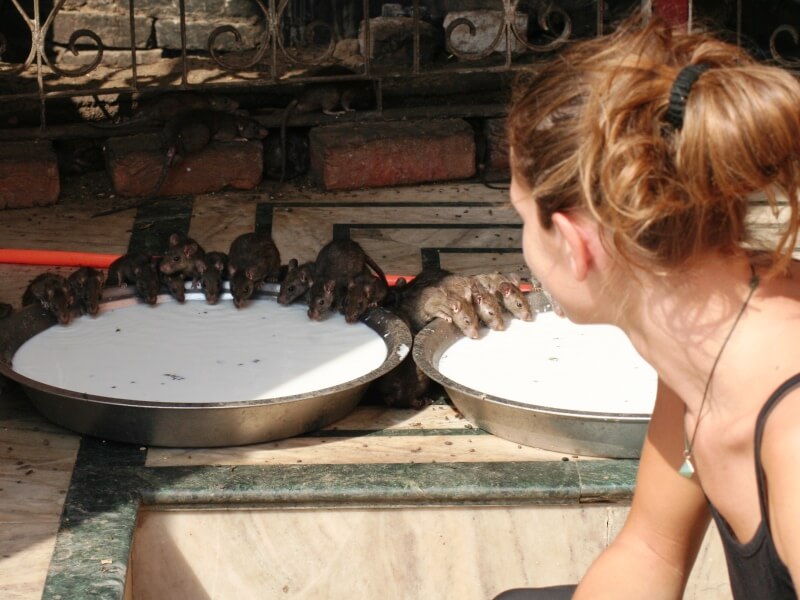
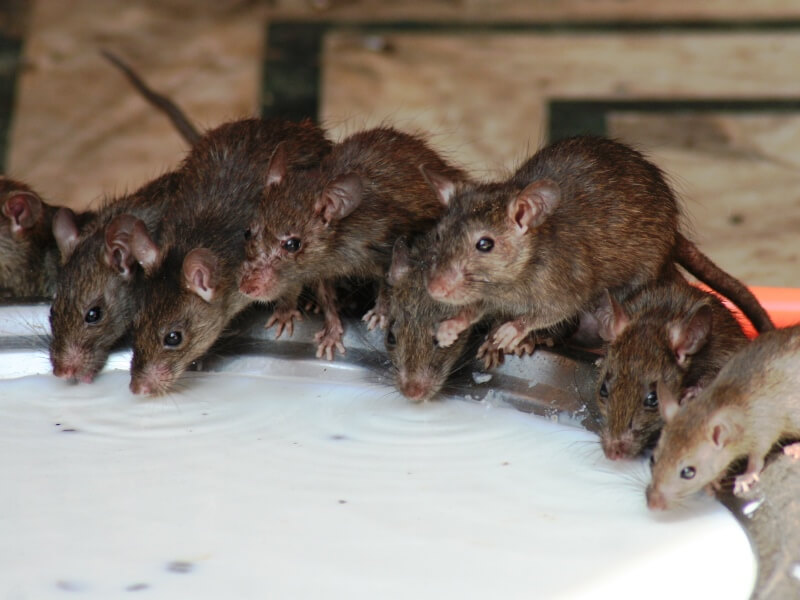
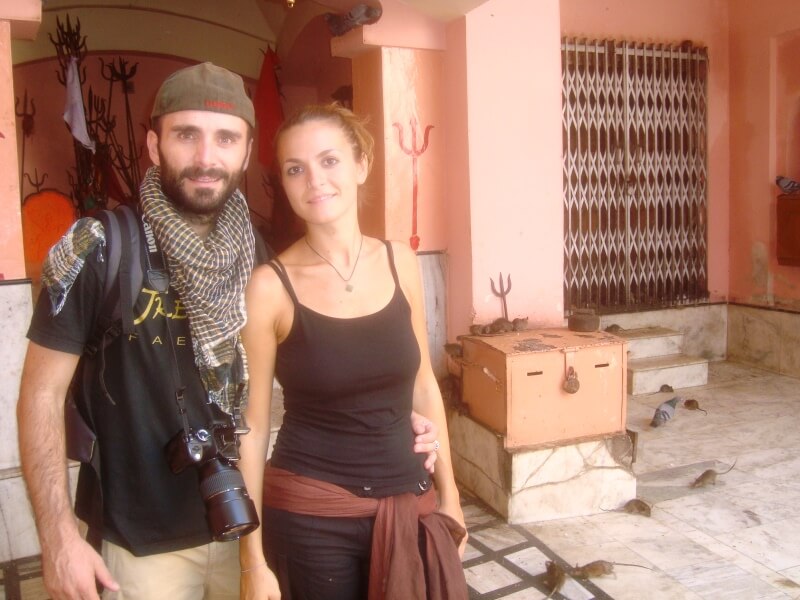
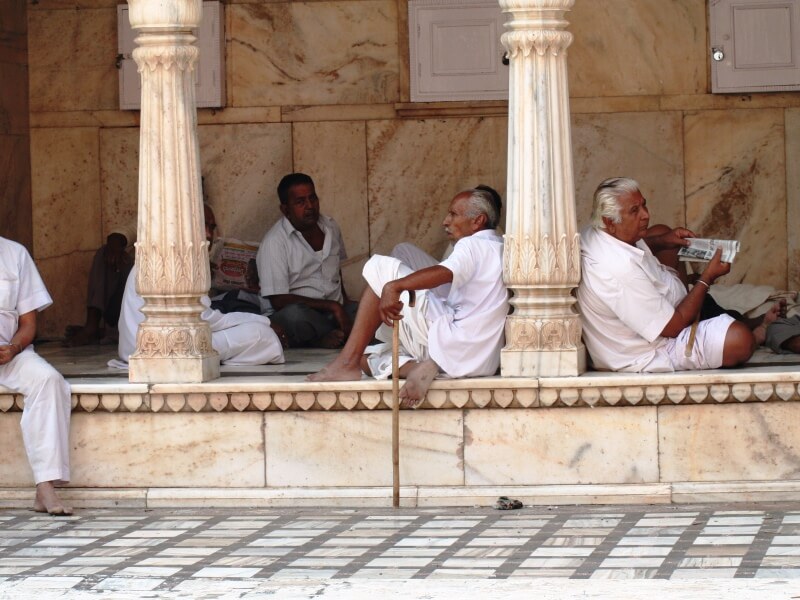
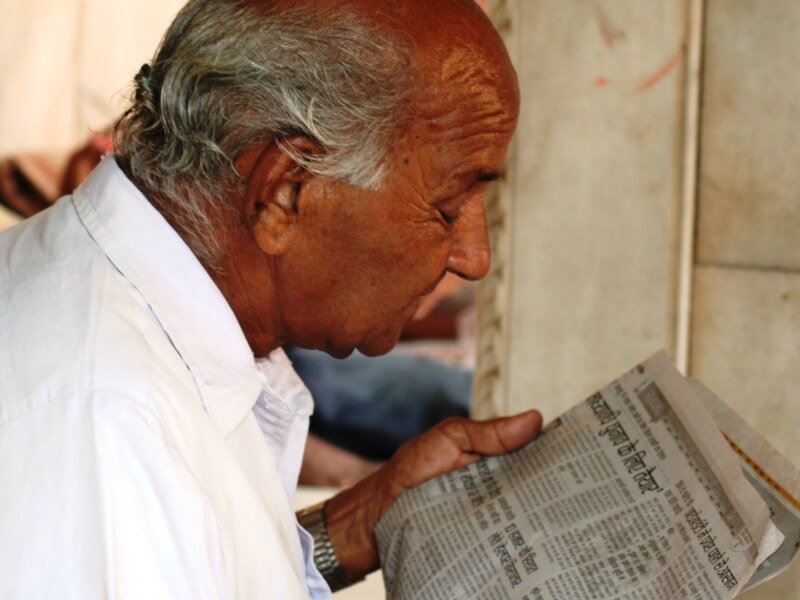
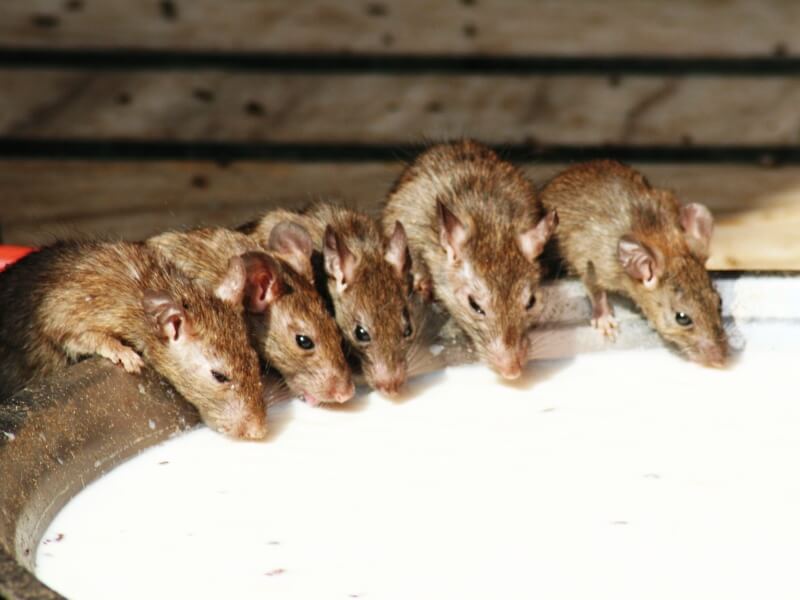
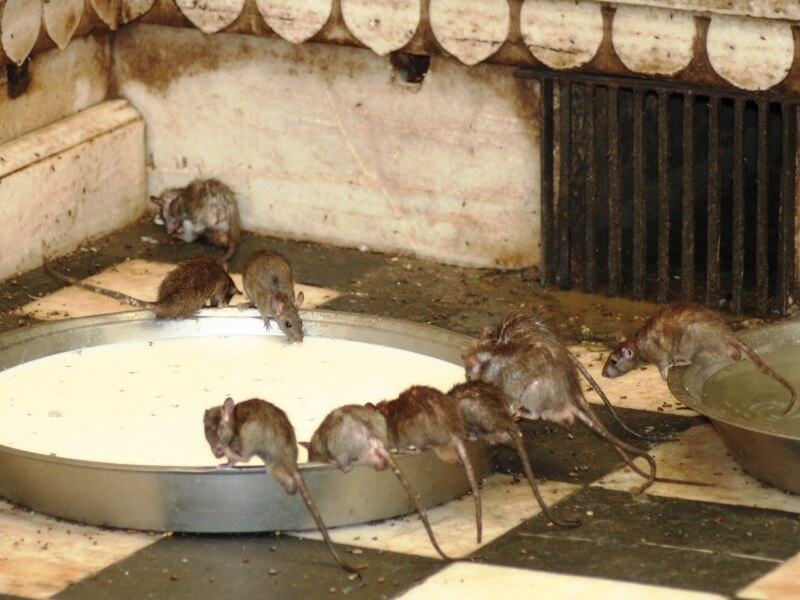
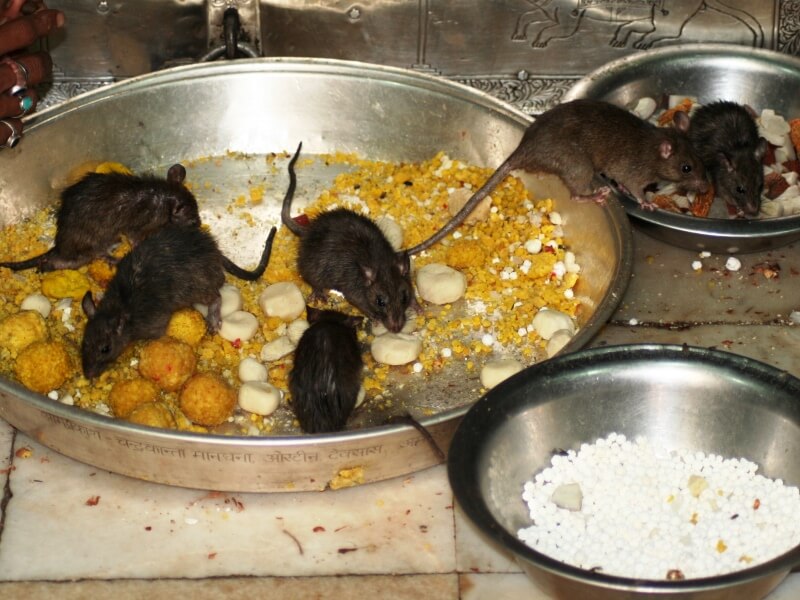
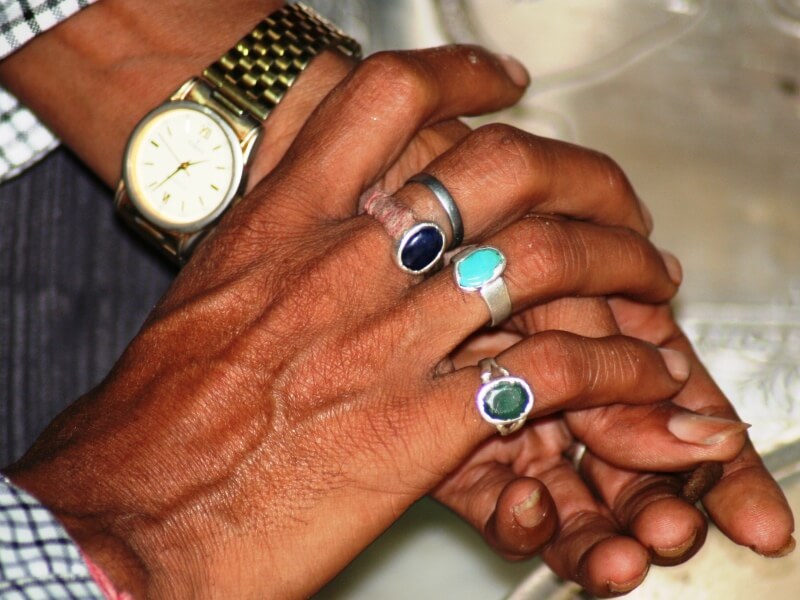
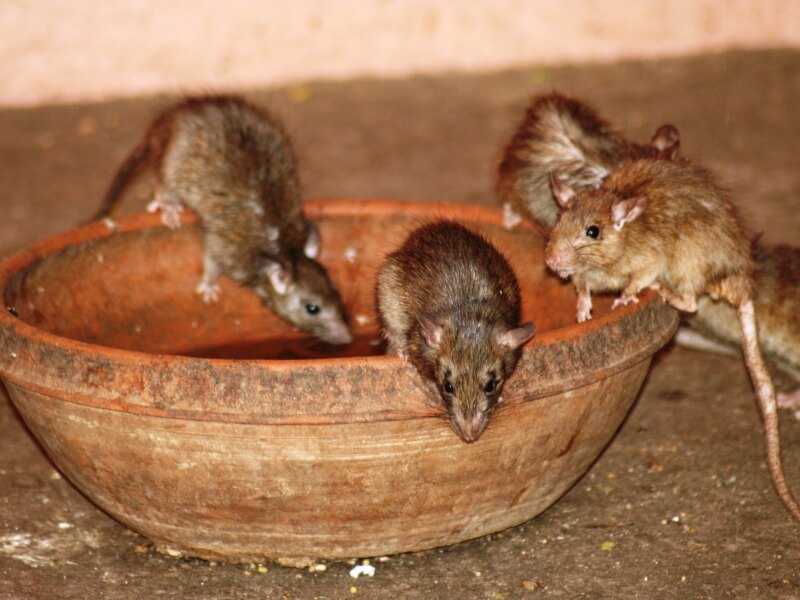
We take yet another train to sneak into a still desert landscape, every now and then a stone hut comes out with some woman who looks after a herd of sacred cows ... we cross villages forgotten by all the Indian gods ...
We arrive in Jodhpur, the blue city, on the day of Diwali.
We celebrate it with a romantic dinner in the elegant "Kalinga Restaurant" and then end up getting lost in one of the many pastry shops in the city gorging ourselves on "gulab jamun".
The Mehrangarh fort built before the discovery of America gives us a wonderful view of the city as well as showing us a fragment of what life was like in those years in this remote place.
It is time to immerse ourselves in the daily life of the city in deep turmoil for Diwali.
People stop to wish us: “Happy Diwali!”… It's nice when we even receive SMS greetings from our Indian friends on our Indian cellphone!
We reach the "Clock Tower", the commercial and social center of the city.
Hundreds of people buy or sell.
Confectioners and firework vendors do business in gold.
Thanks to our Lonely Planet we end up in a small place, “Shri Mishrilal”, drinking the best lassi of our life! A small shop that certainly does not shine for hygiene and in which we would never have entered if we had not read the excellent references of our guide, here is a piece of advice that we feel we must give: look for the most typical and genuine places when you travel, you will live by sure the most vivid and profound experiences of your trip!
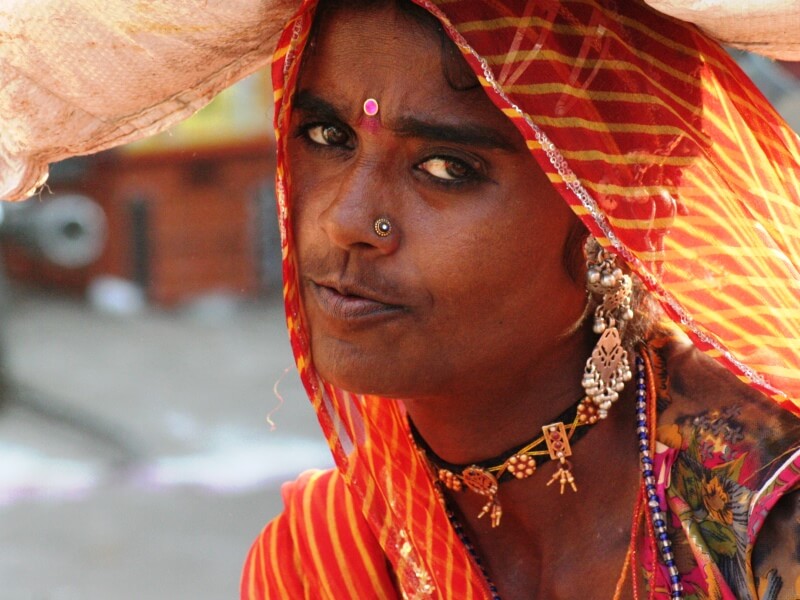
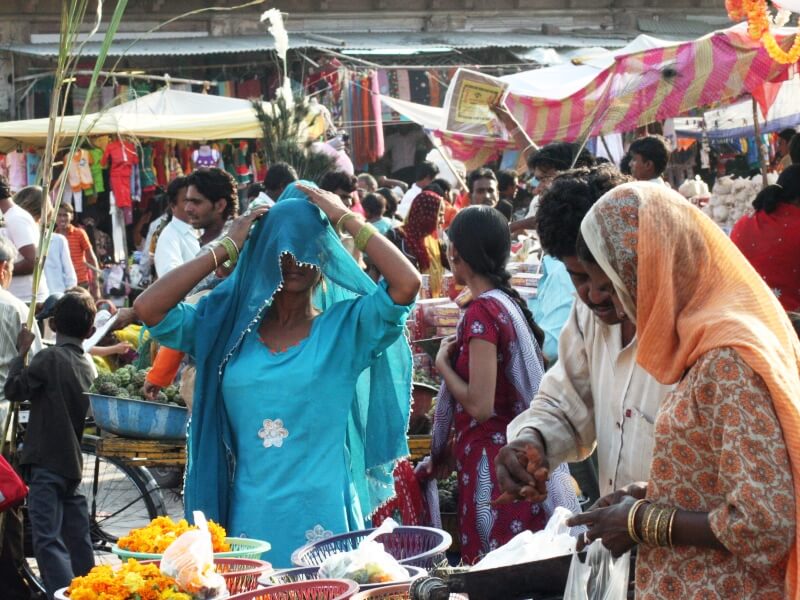
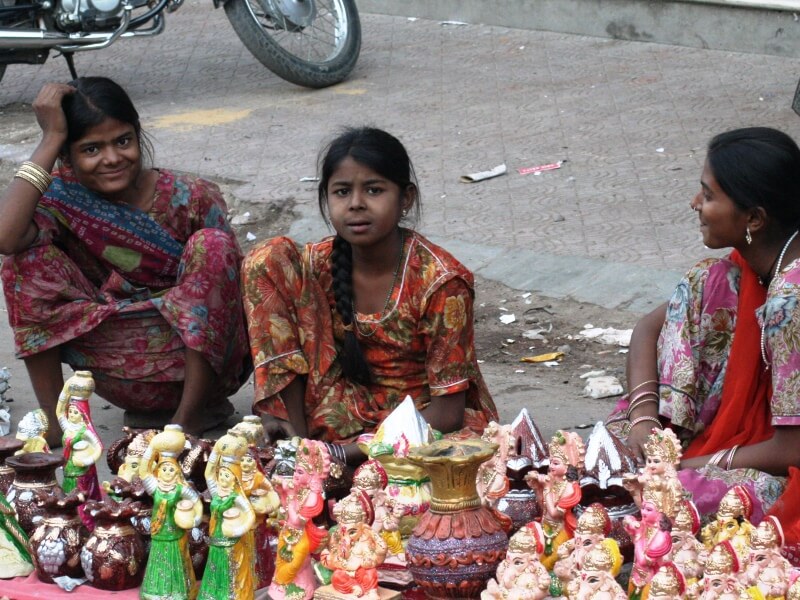
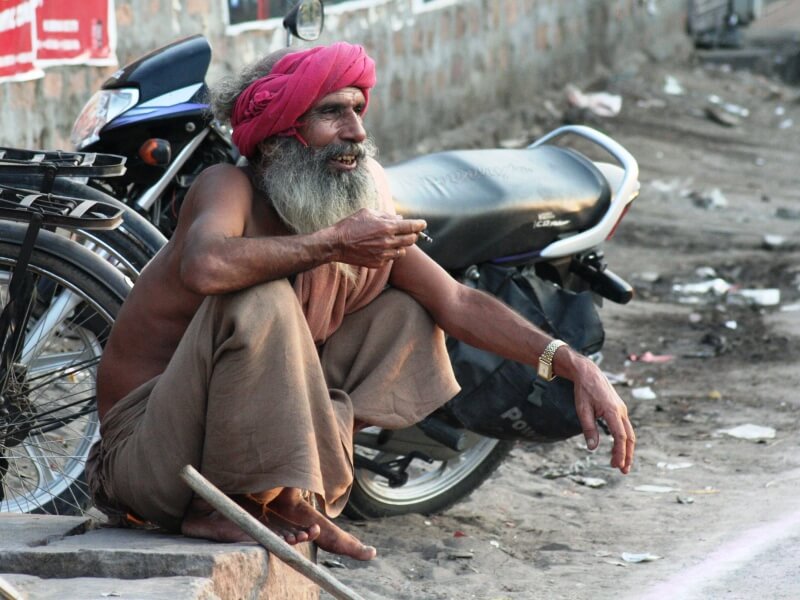
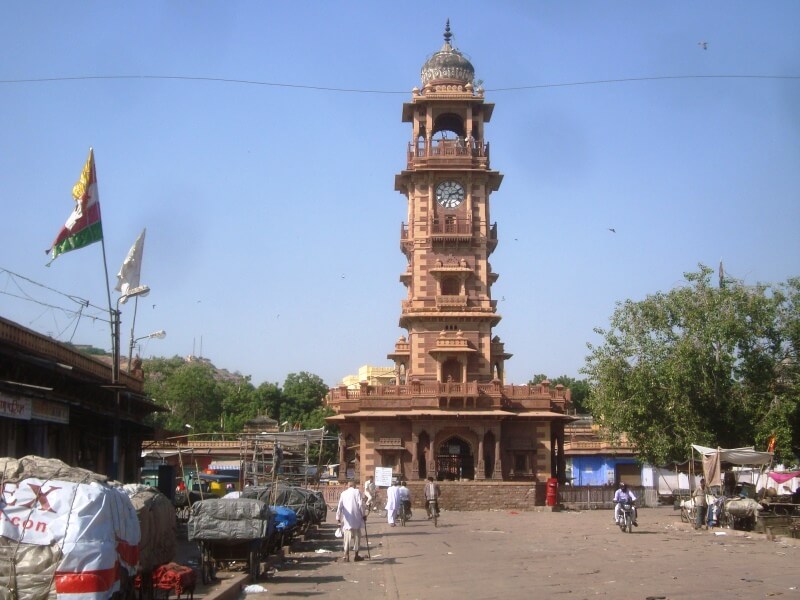
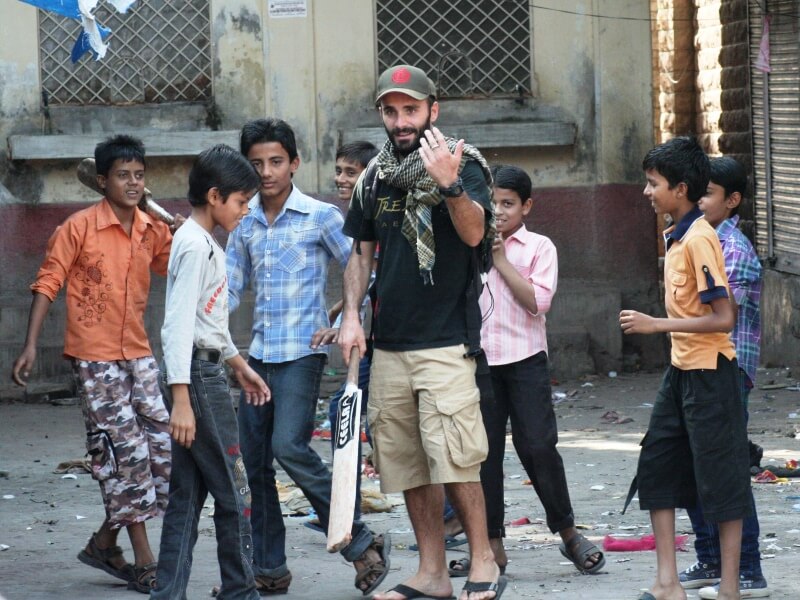
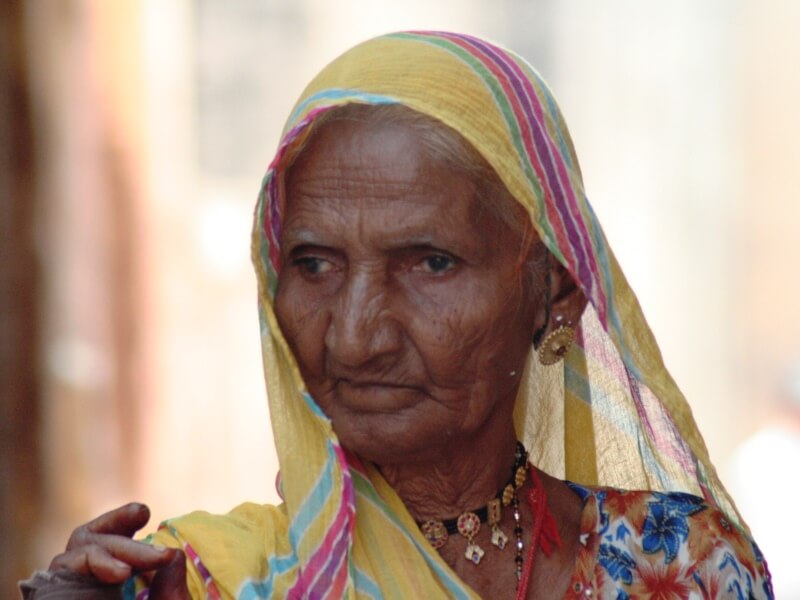
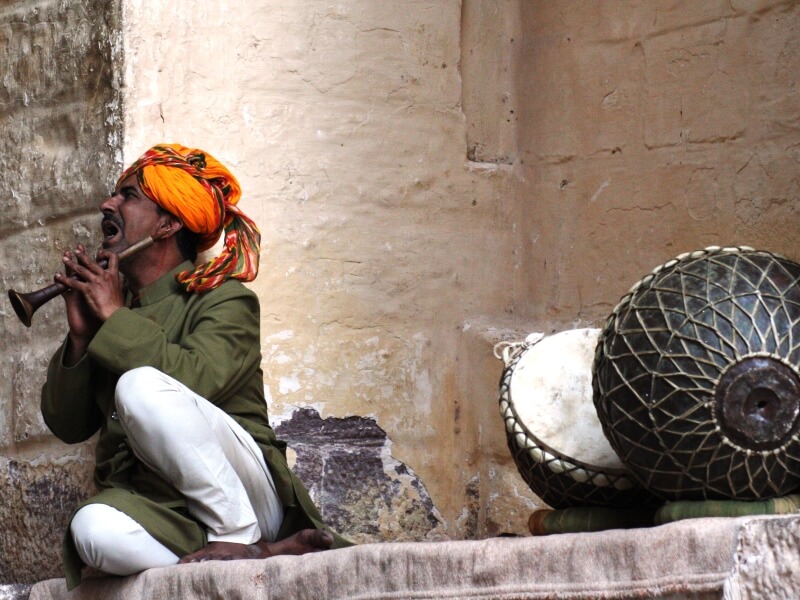
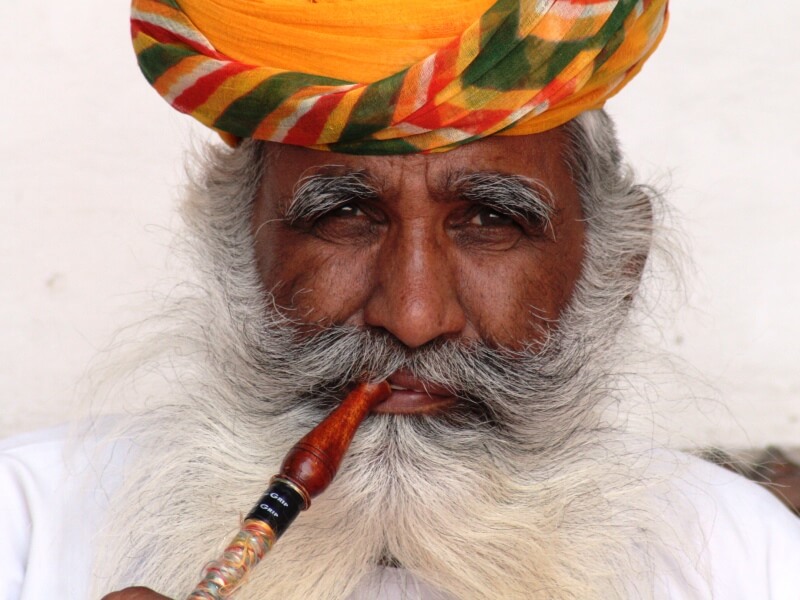
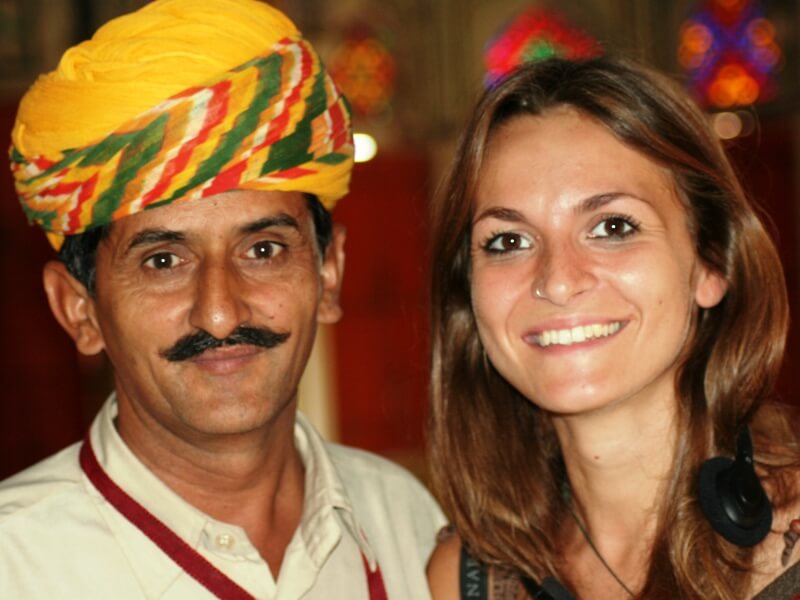
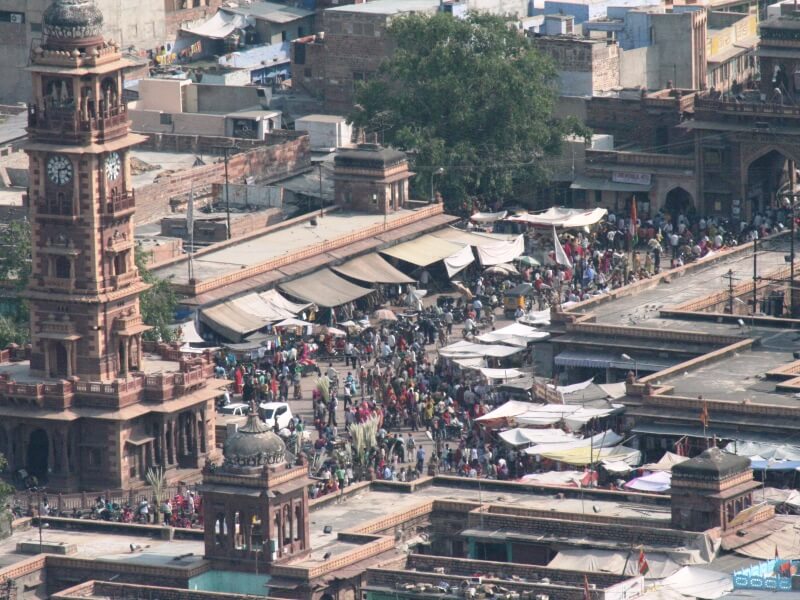
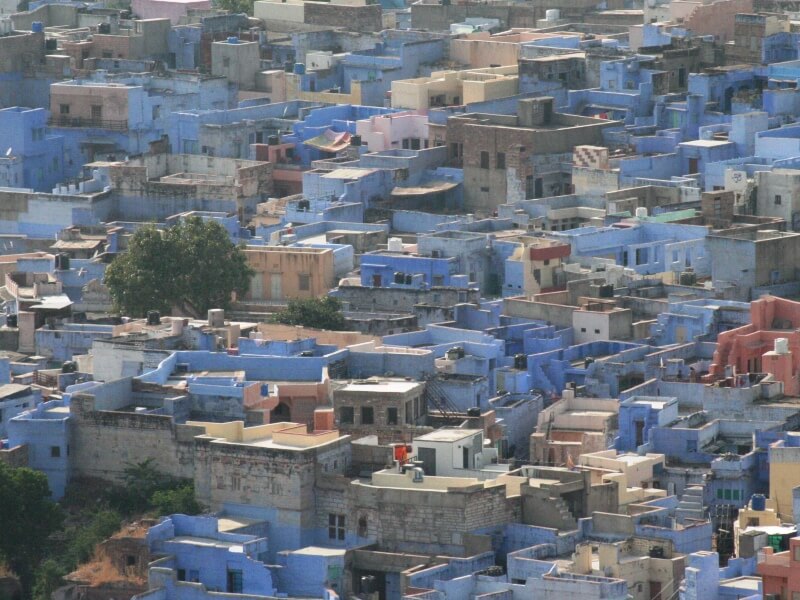
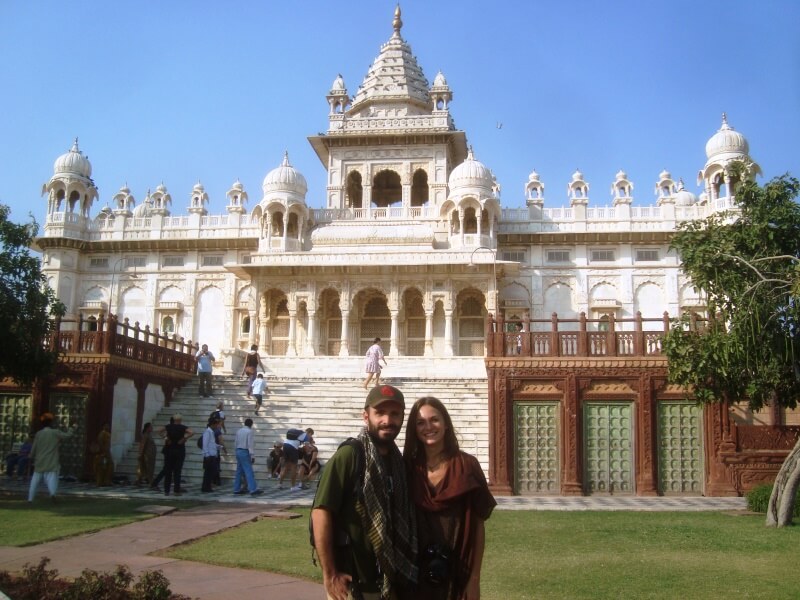
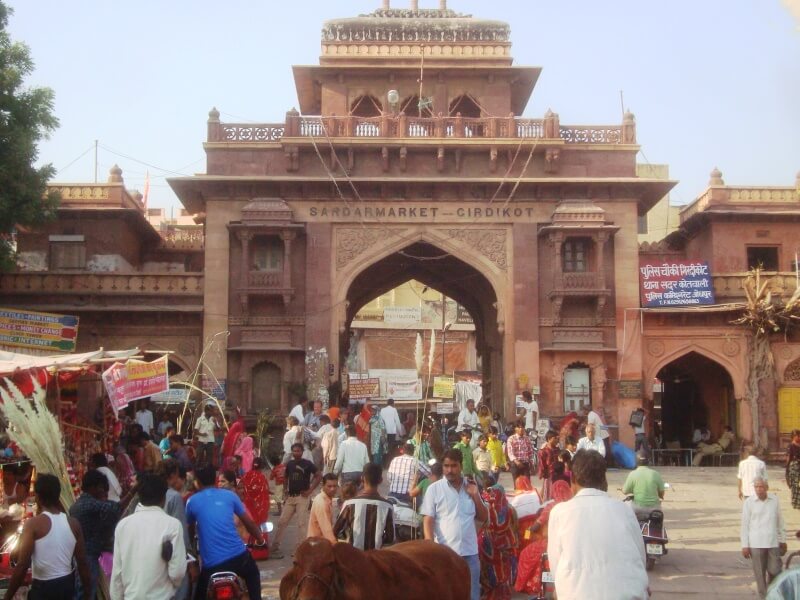
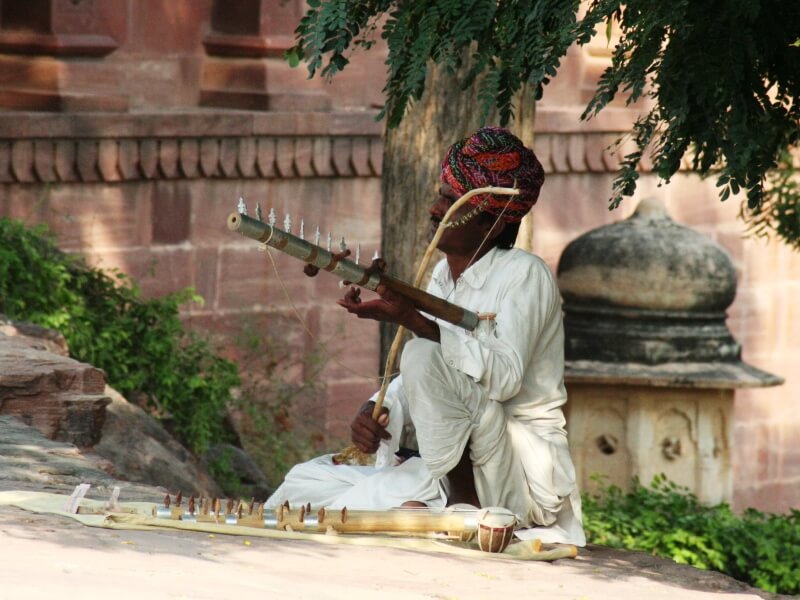
Ajmer welcomes us with its frenzy, its chaos, tuk tuk running in every direction, merchants who declaim their wares, strong smells.
We immediately head to the Dargati Mosque, it is the first time I have seen such an active mosque. Full of faithful who pray.
Outside, an impressive amount of cripples begging for alms crawling along the street.
As I wandered around the various courtyards of the mosque I thought about how important faith was.
That quid that makes you donate your dinner or your savings to a statue even when you have nothing, that quid that makes you adore a bunch of mice, that makes you bathe in the poisonous waters of a river, that makes you give all dreams , hopes and desires in the hands of unlikely multicolored and a thousand shapes, that something that makes you accept with serene resignation the miserable life you have because the next one will be better thanks to the current one, that something that makes you deprive of your life by killing others who don't think like you to make you earn a wonderful afterlife.
Pushkar is a magical and spiritual town, home to Hindu pilgrimages to its famous temple dedicated to Brahma (one of the few in the world).
The town is really very small, it's all enclosed around the Pushkar lake, you can go around in a couple of hours, but it's worth getting lost in its alleys and sitting on the shores of the lake to admire what is happening. It is populated by holy men / pseudo priests who propose to perform lucky rites for tourists.
Given the great spirituality of the city, Pushkar does not eat meat or drink alcohol.
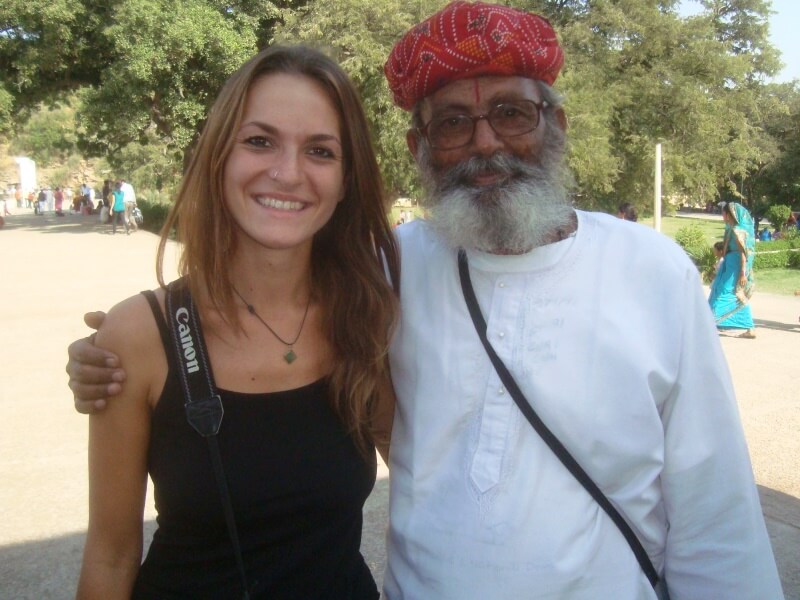
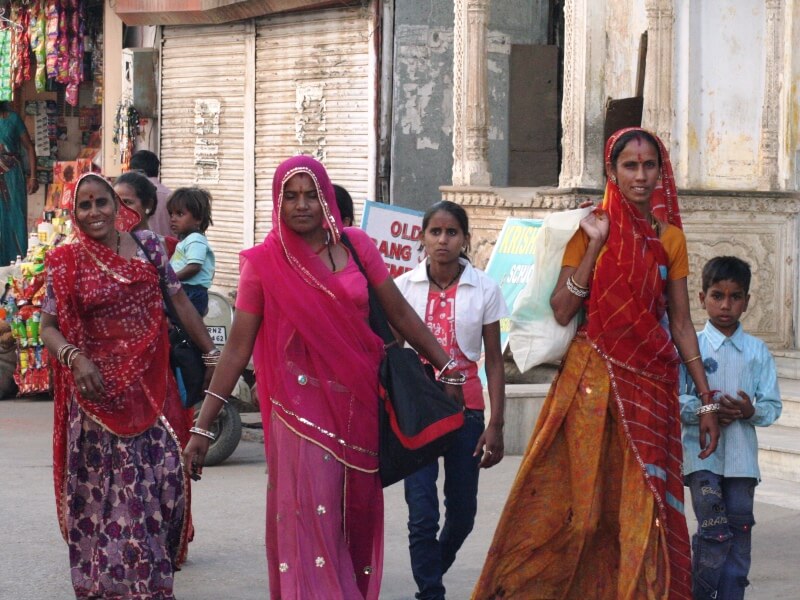
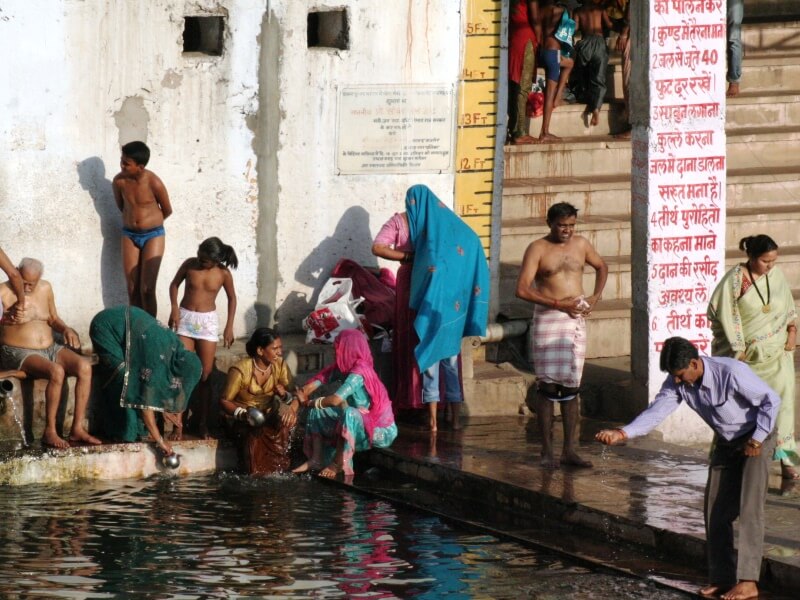
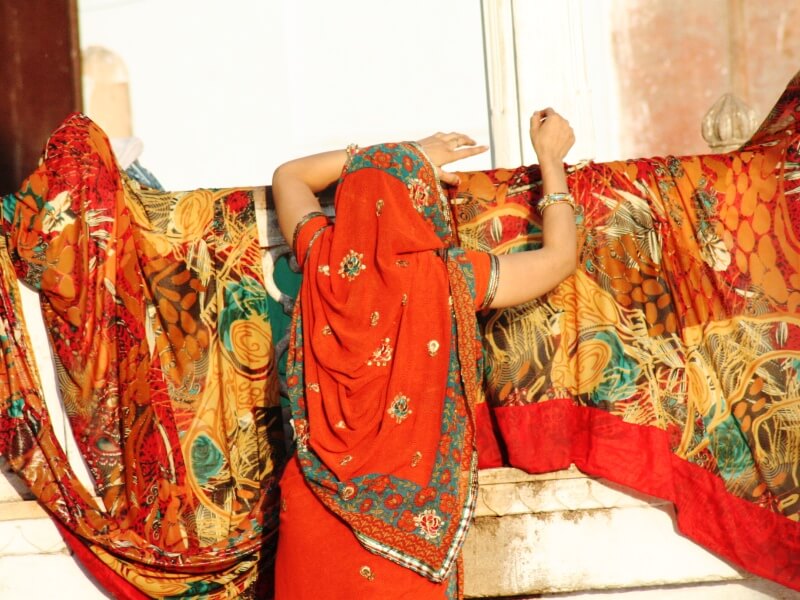
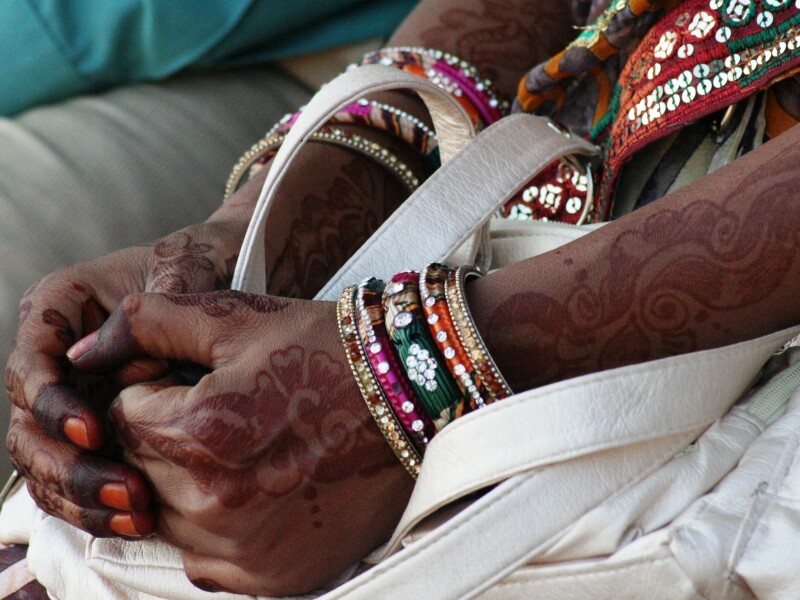
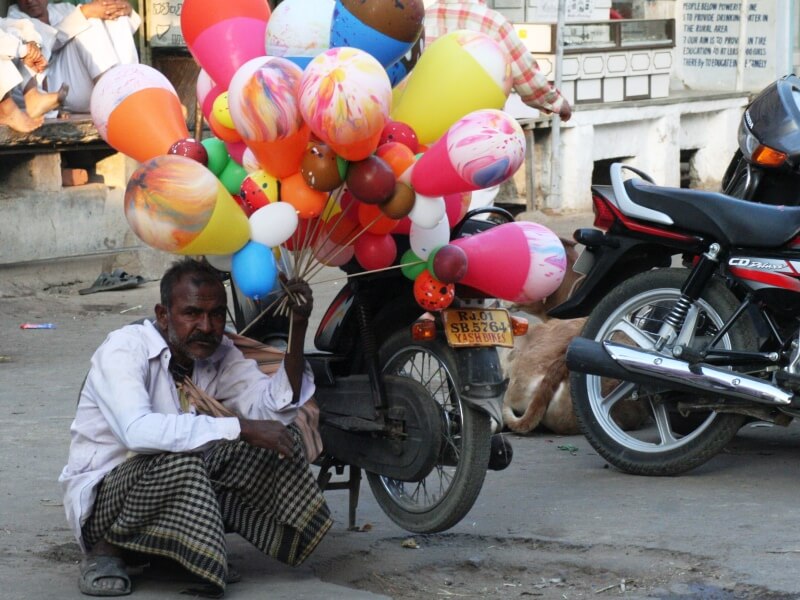
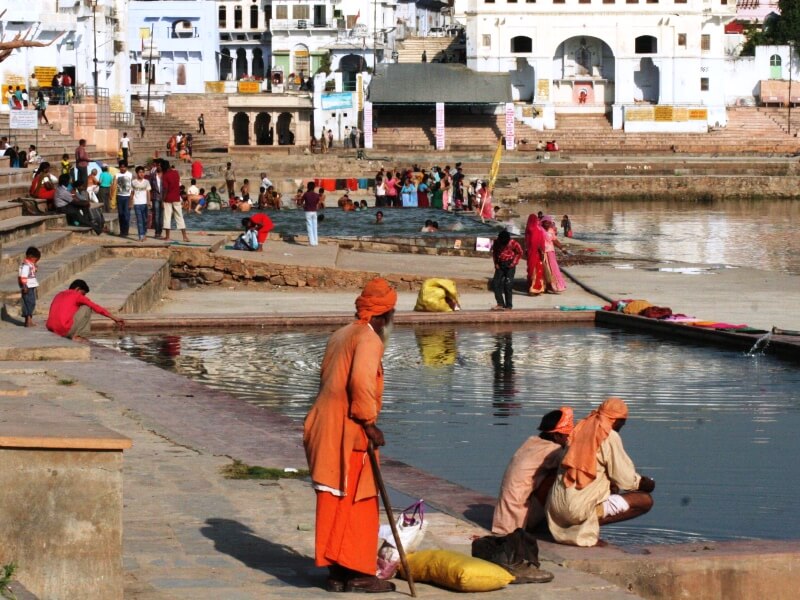
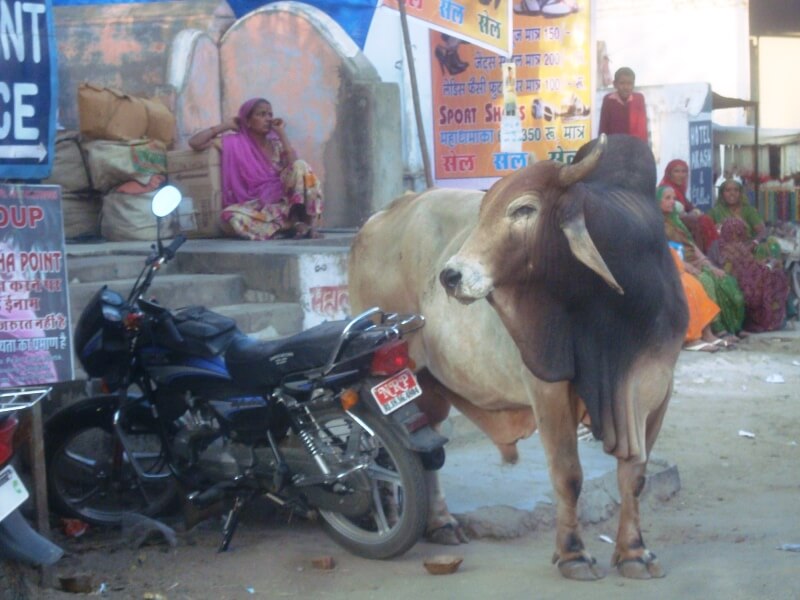
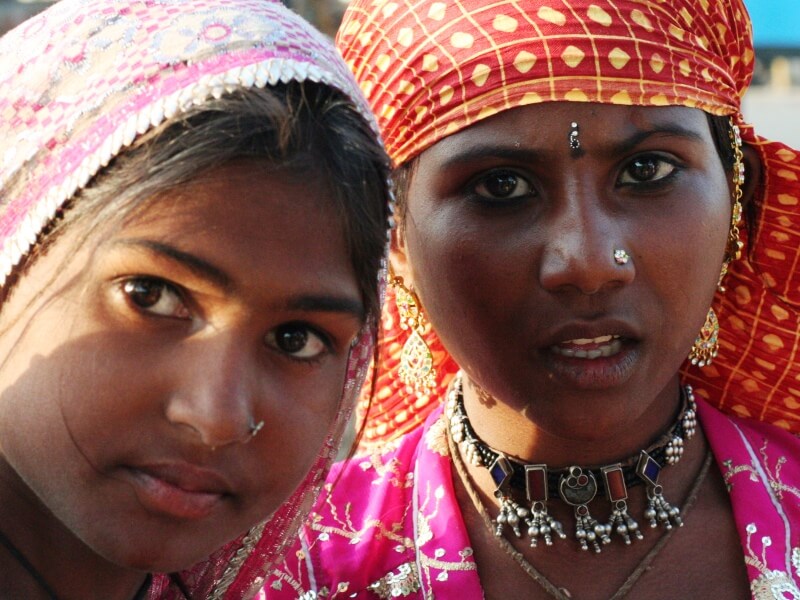
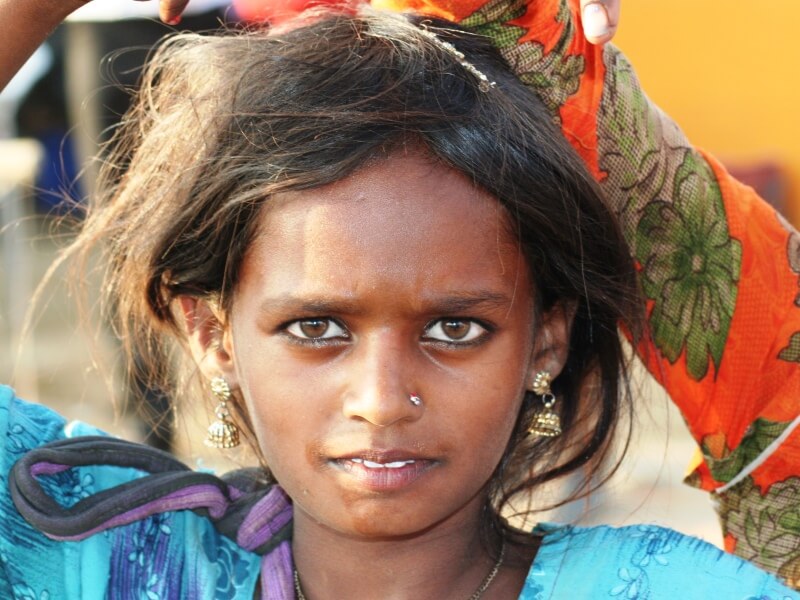
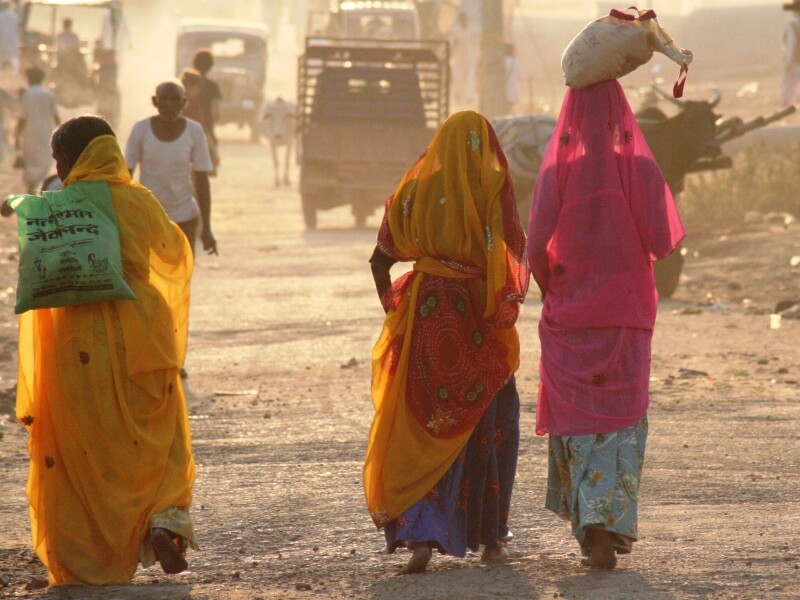
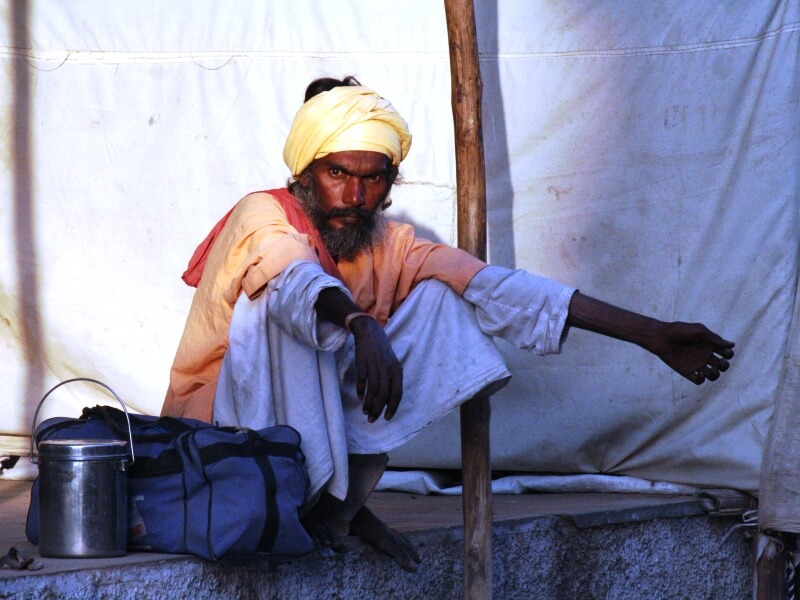
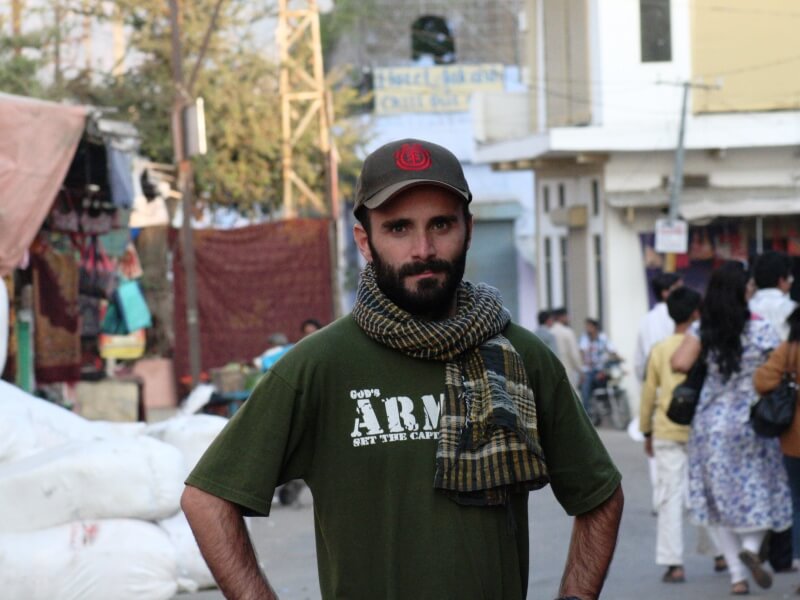
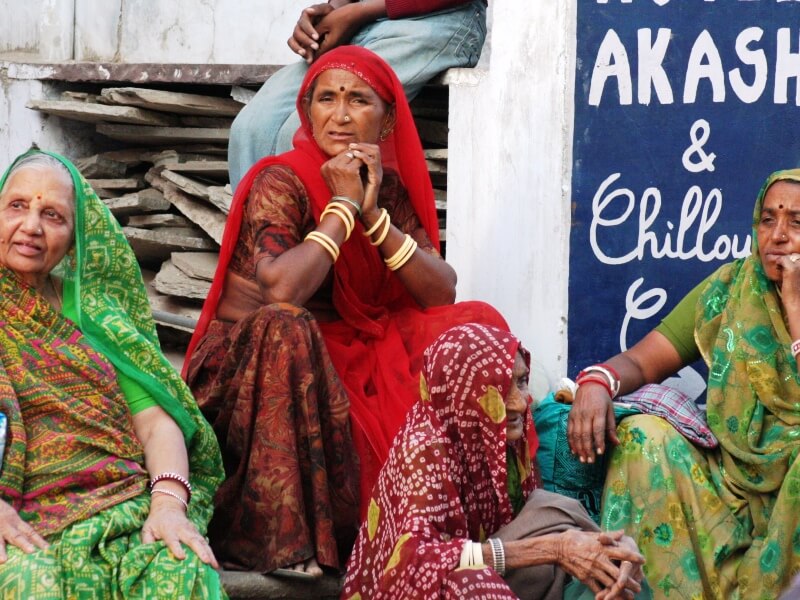
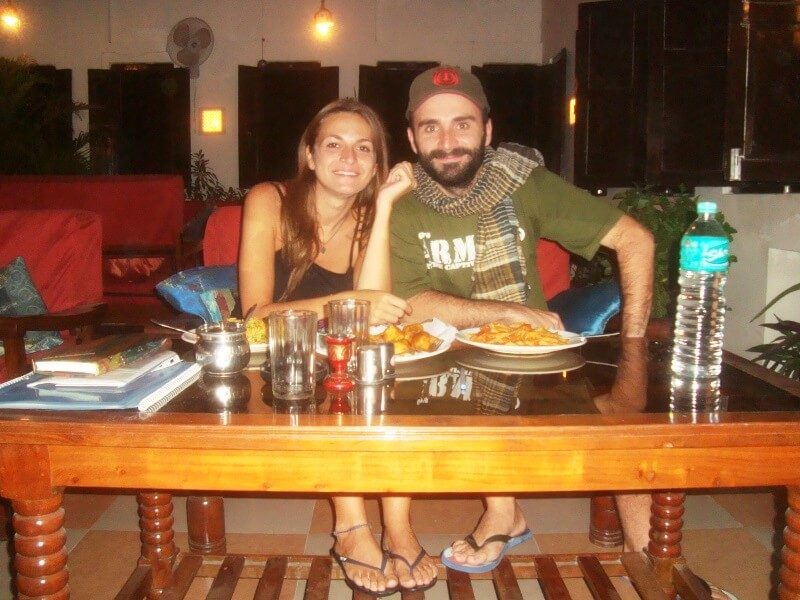
Udaipur is by far the most romantic city in Rajasthan and the one that most represents it. Like Pushkar, also in this case the city has developed around the great Pichola lake which is overlooked by beautiful buildings.
Above all stands the majestic City Palace; the ancient palace of the maharajas is the largest in all of Rajasthan and is so large that, in addition to the part that can be visited with the various royal rooms, they have come up with 3 luxury hotels!
Speaking of hotels, you will see from afar the very famous Lake Palace Hotel in the middle of the lake which is one of the most romantic hotels in the world. Unfortunately, for some years now, it can only be accessed if you stay there, and it has truly prohibitive costs for us humans.
We spend a few days in this delightful town also to recover a bit since we will soon leave again to discover theSouthern India! The adventure continues in this incredibly mystical land!
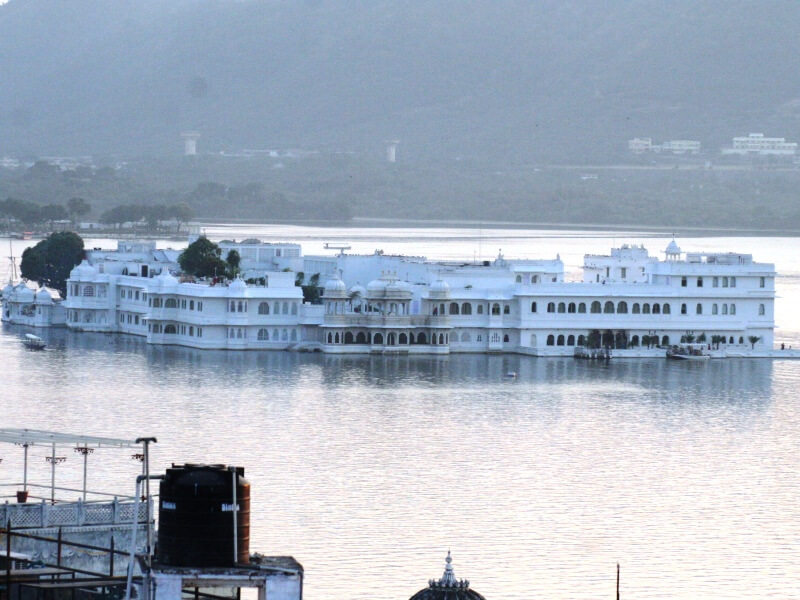
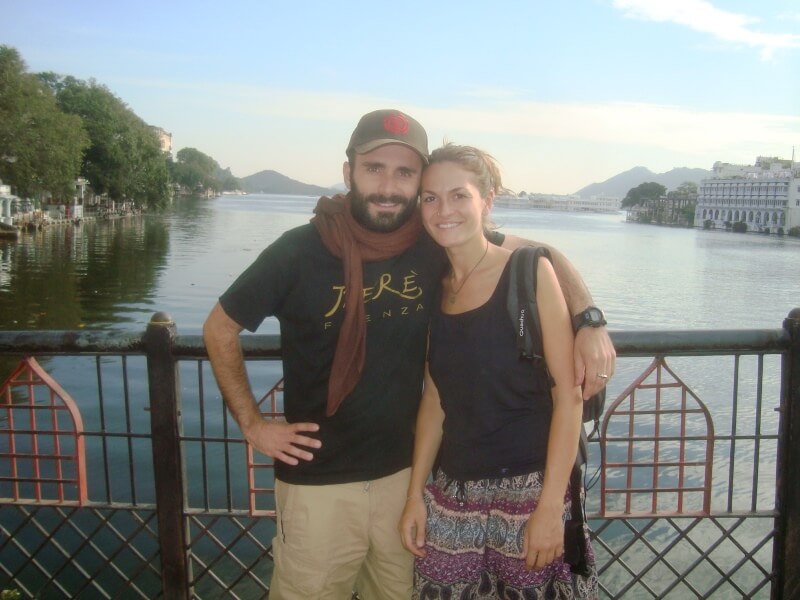
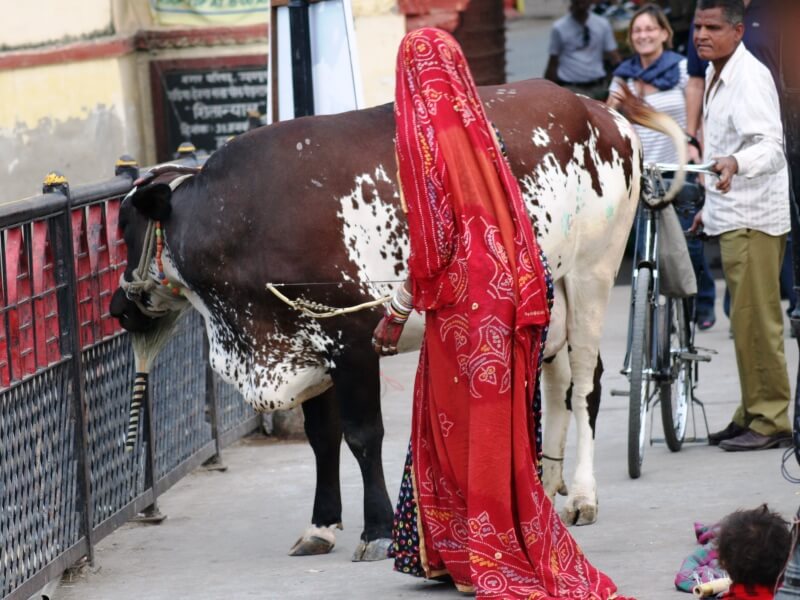
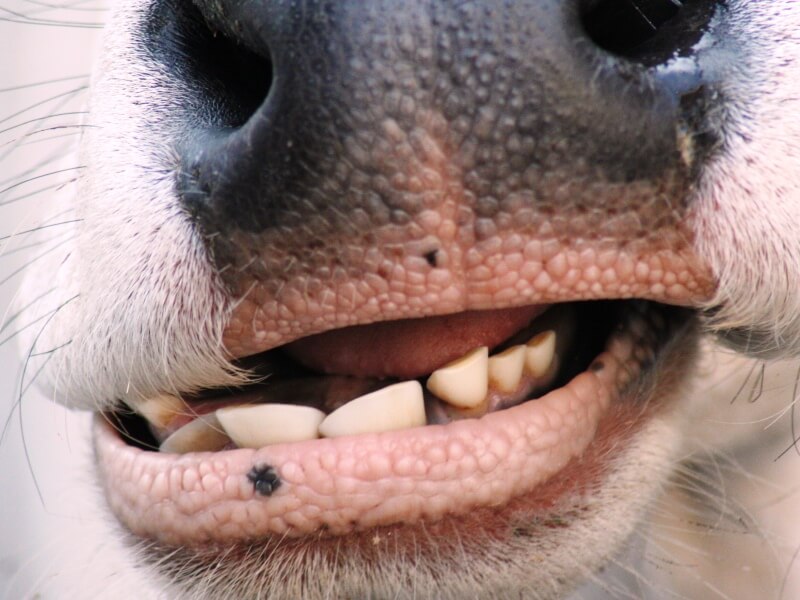
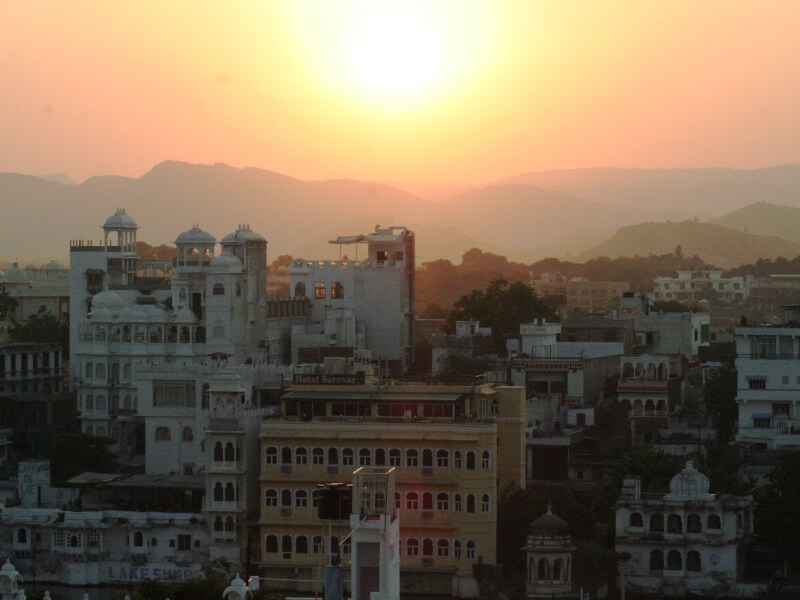
Error: No feed found.
Please go to the Instagram Feed settings page to create a feed.